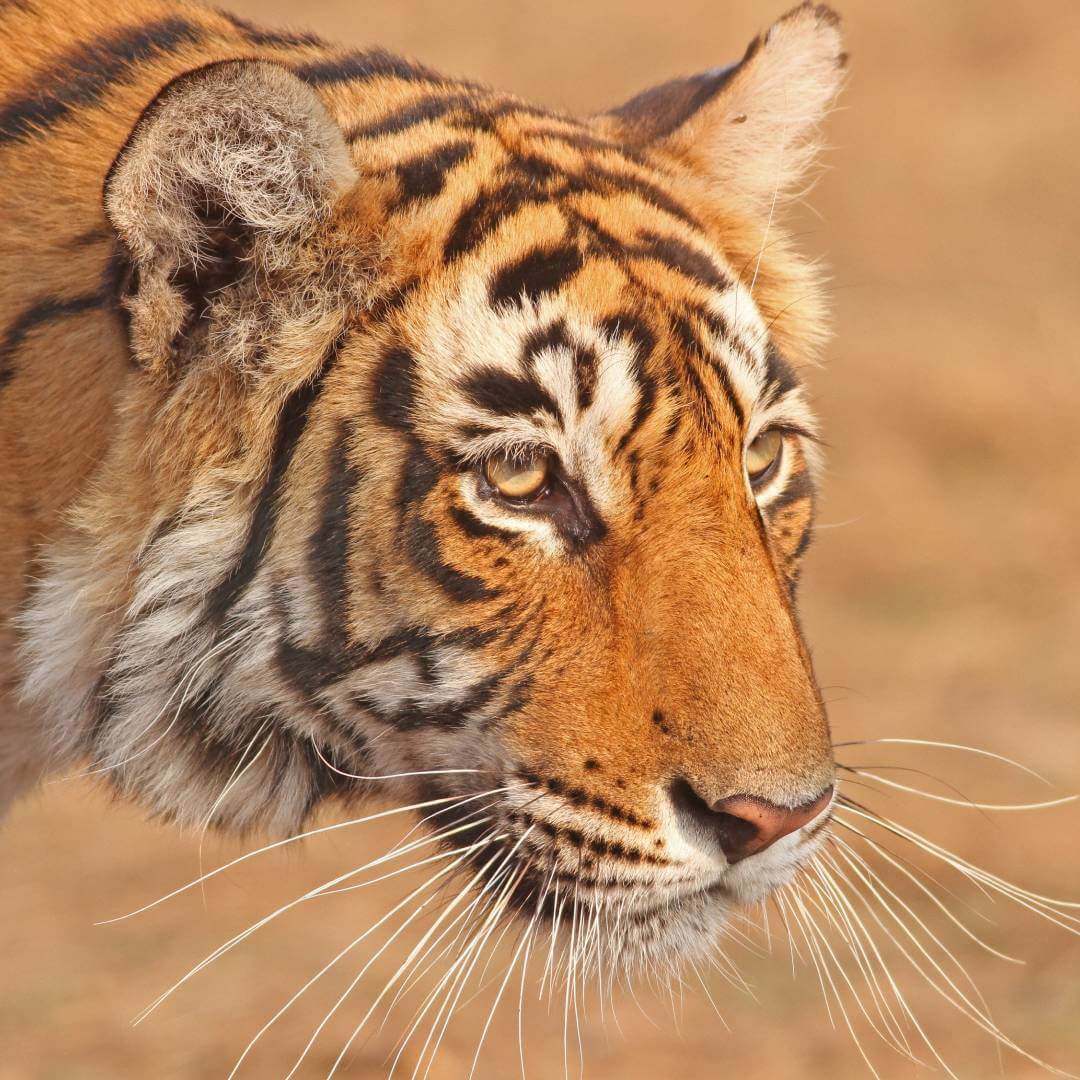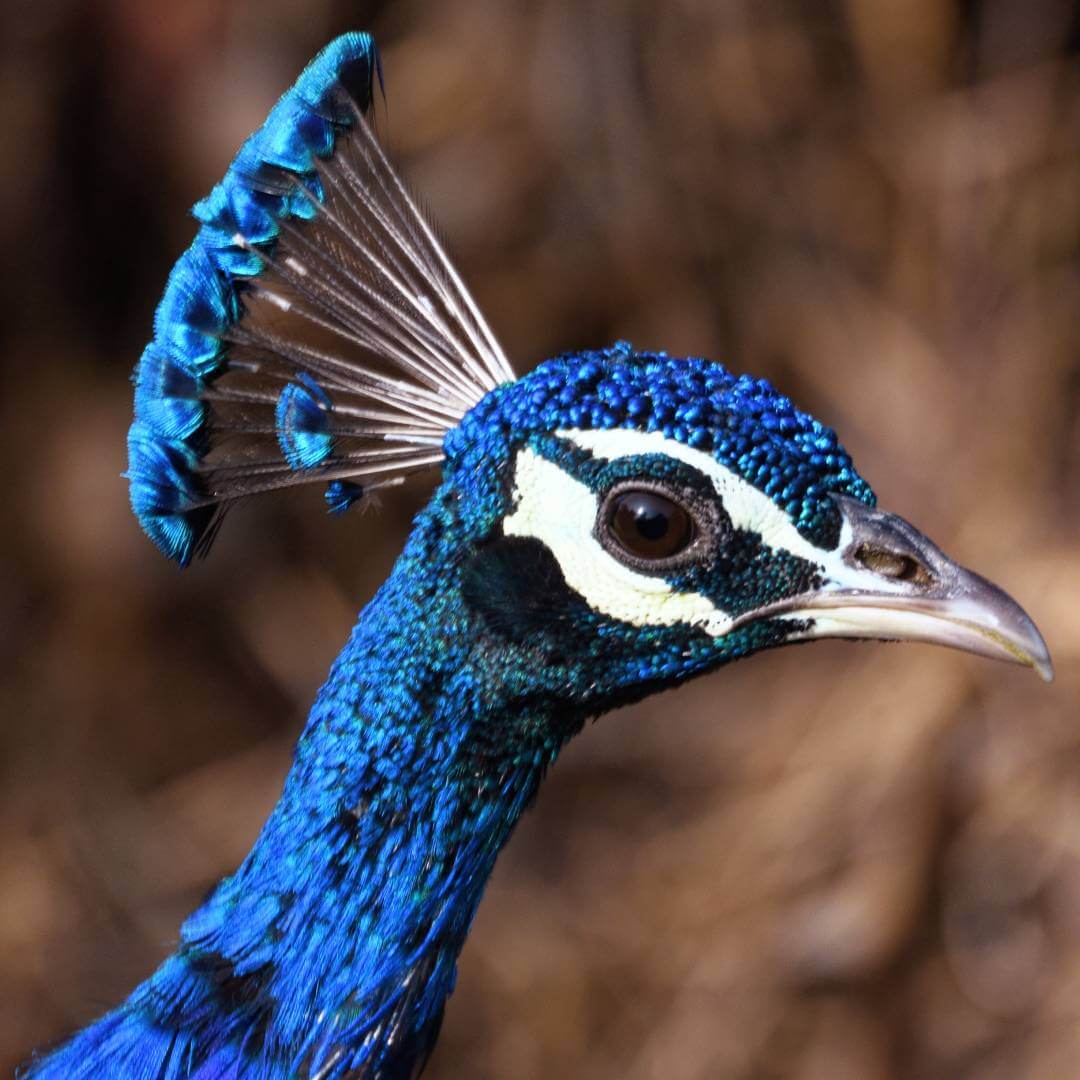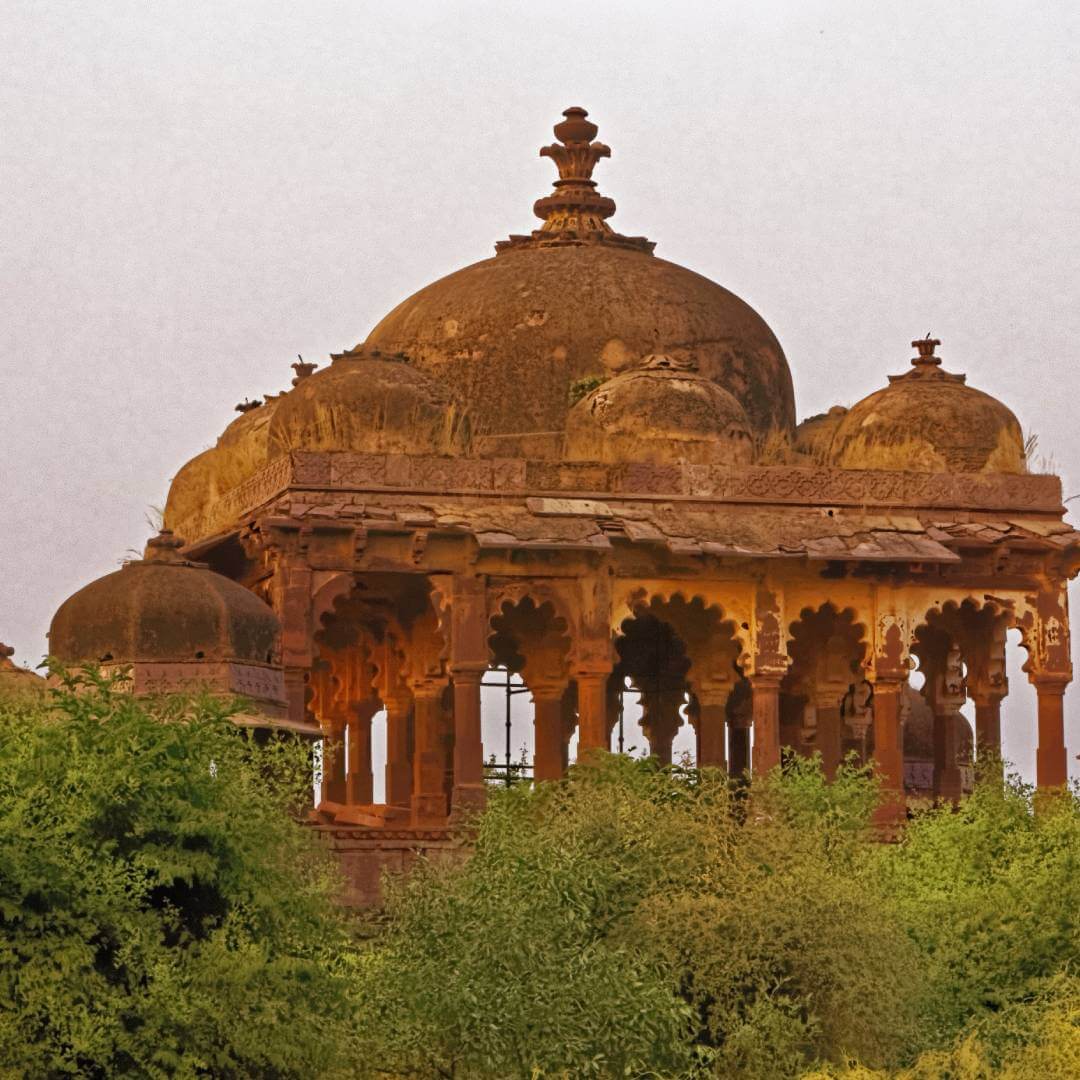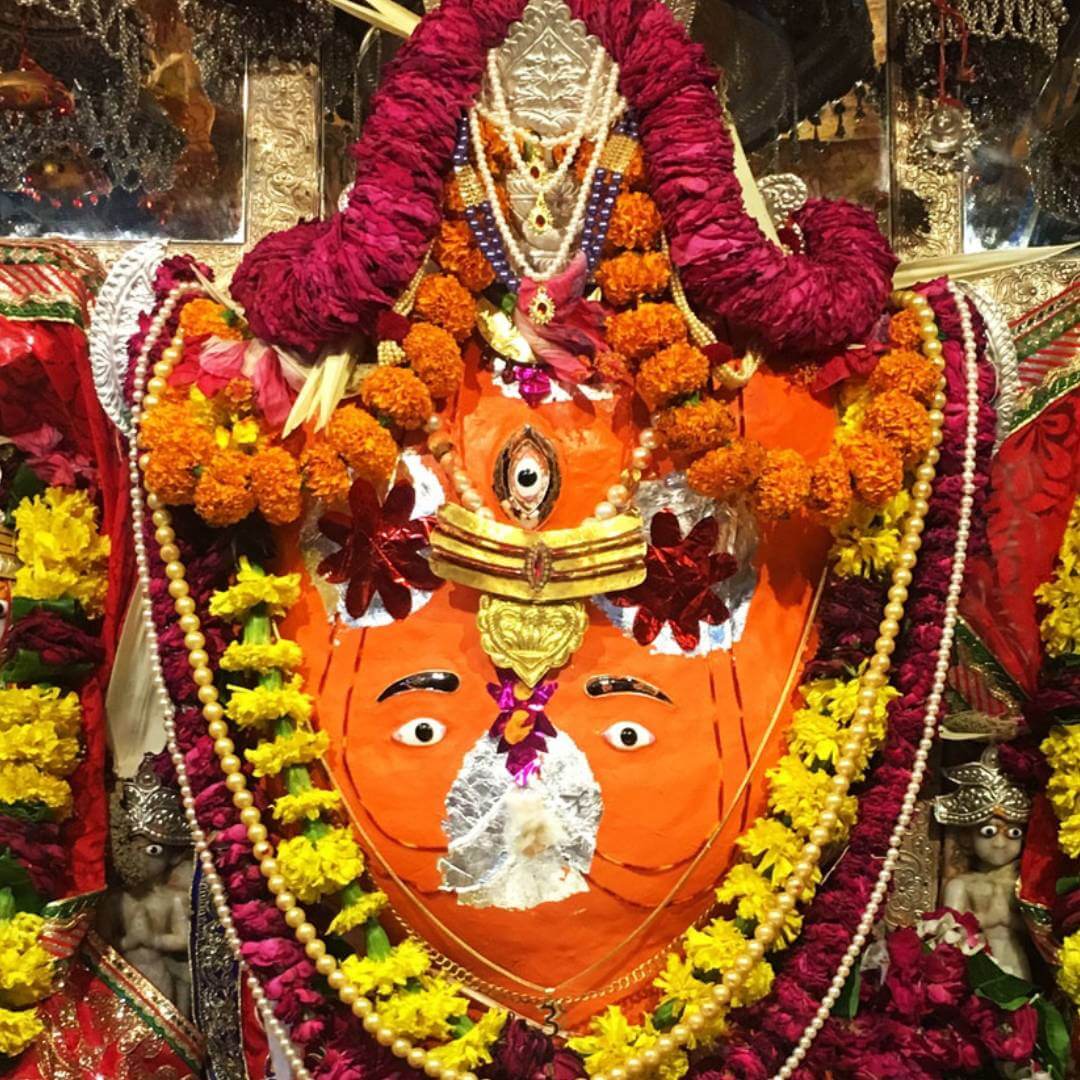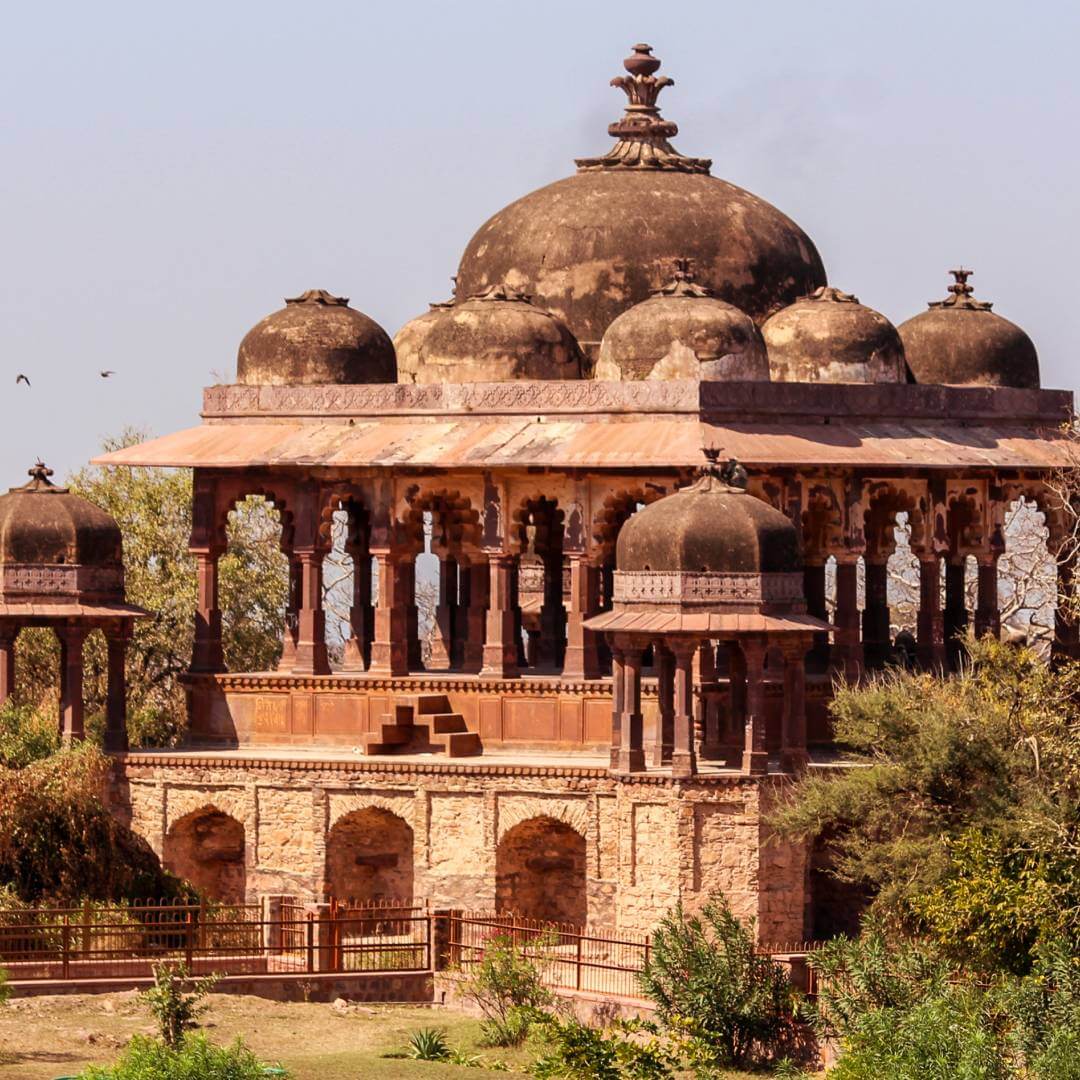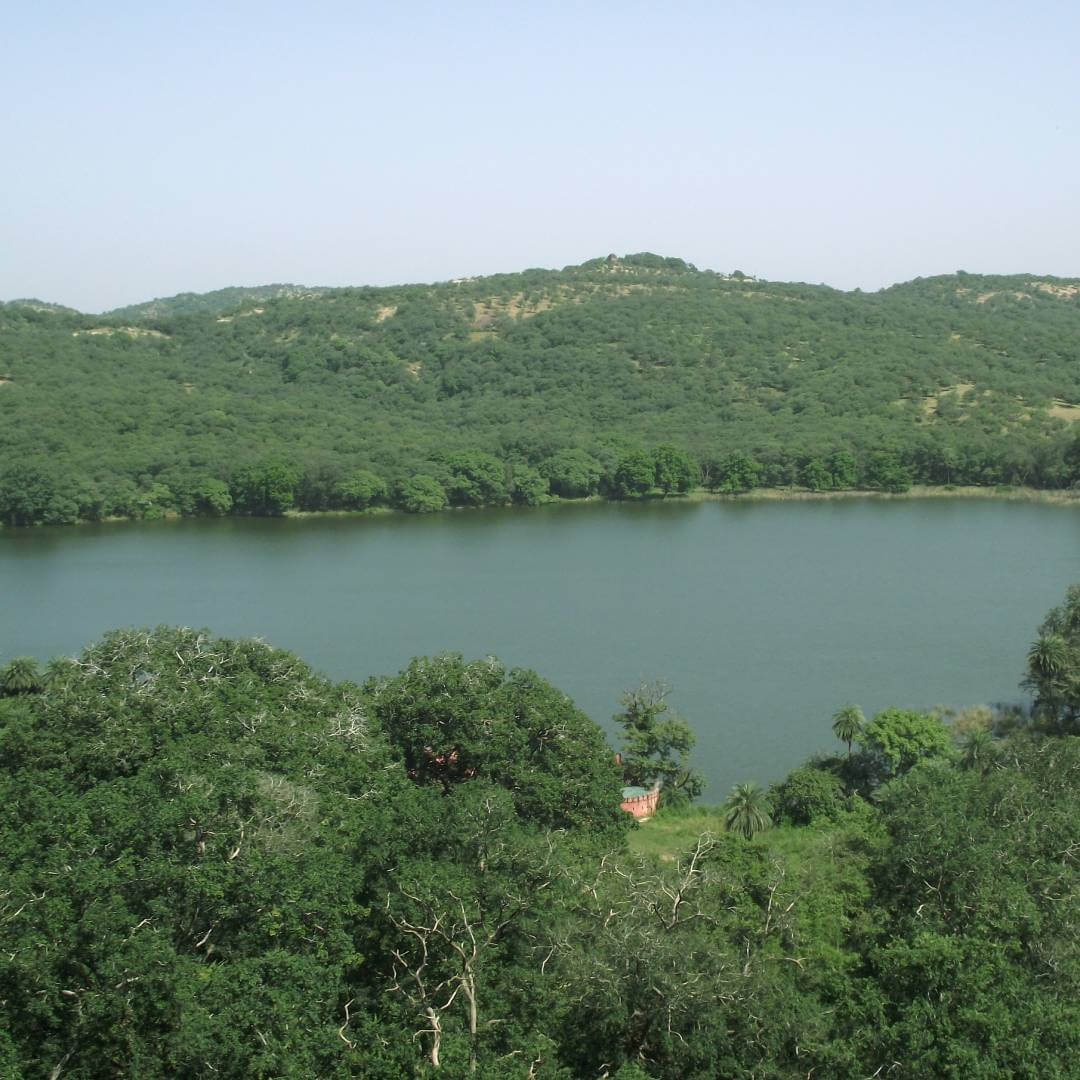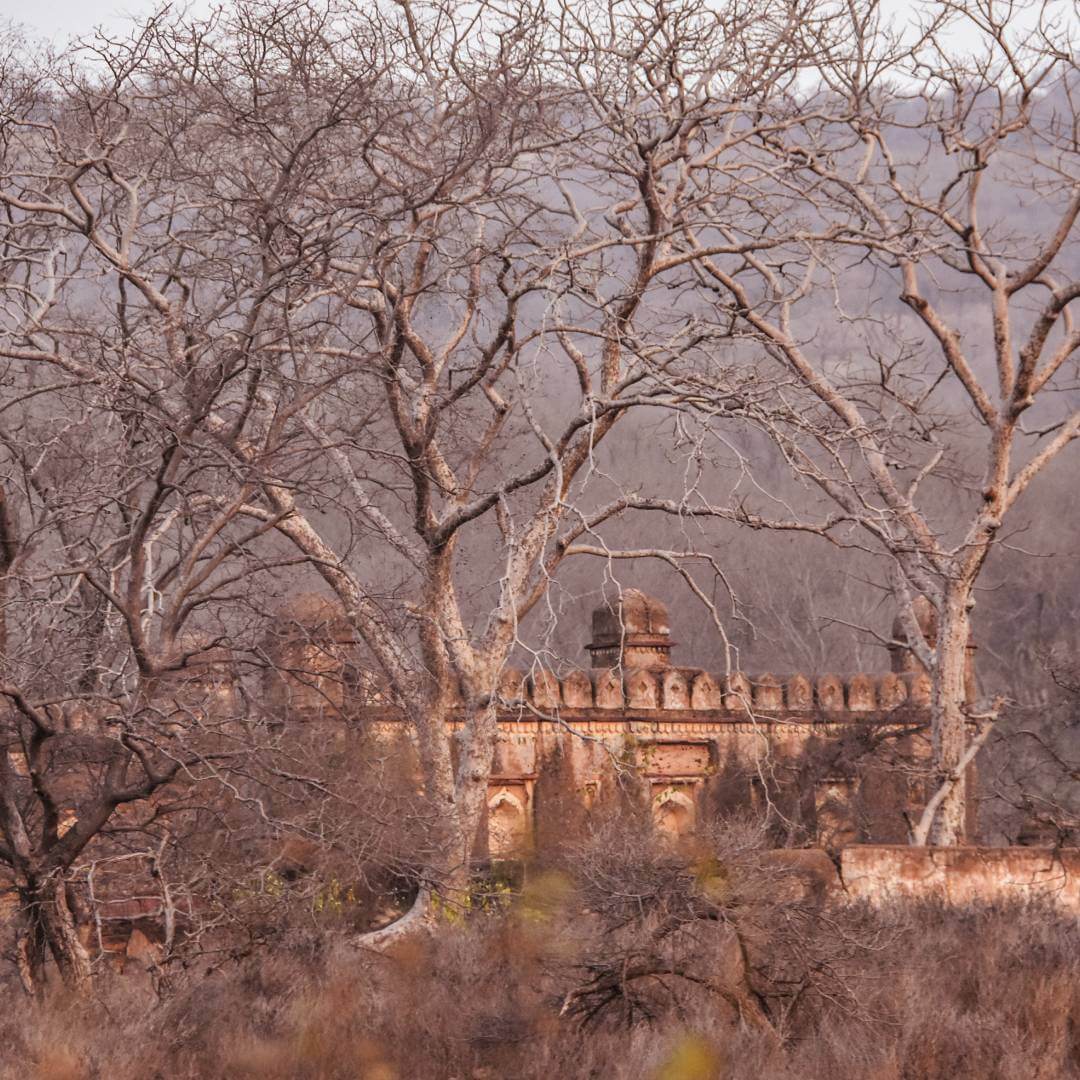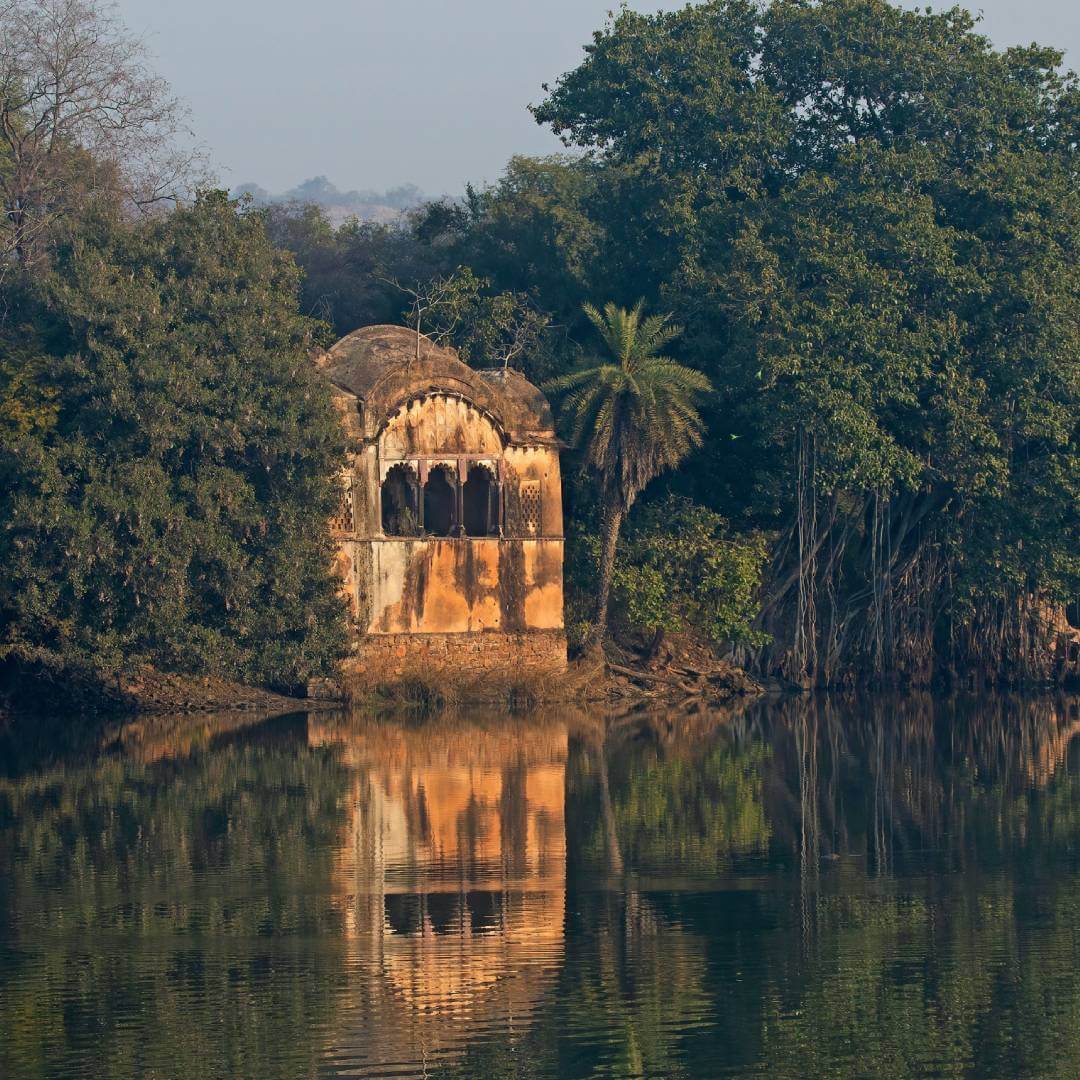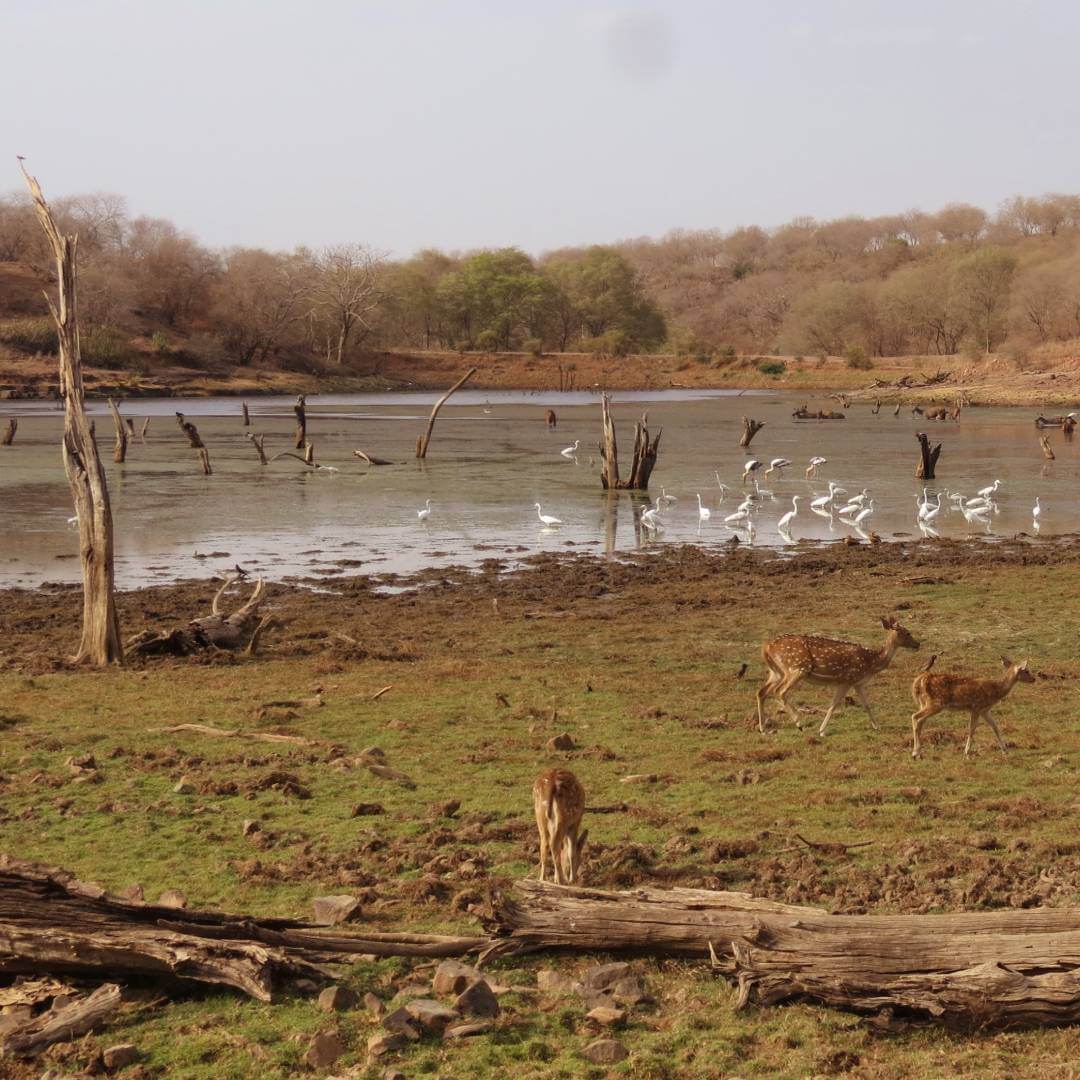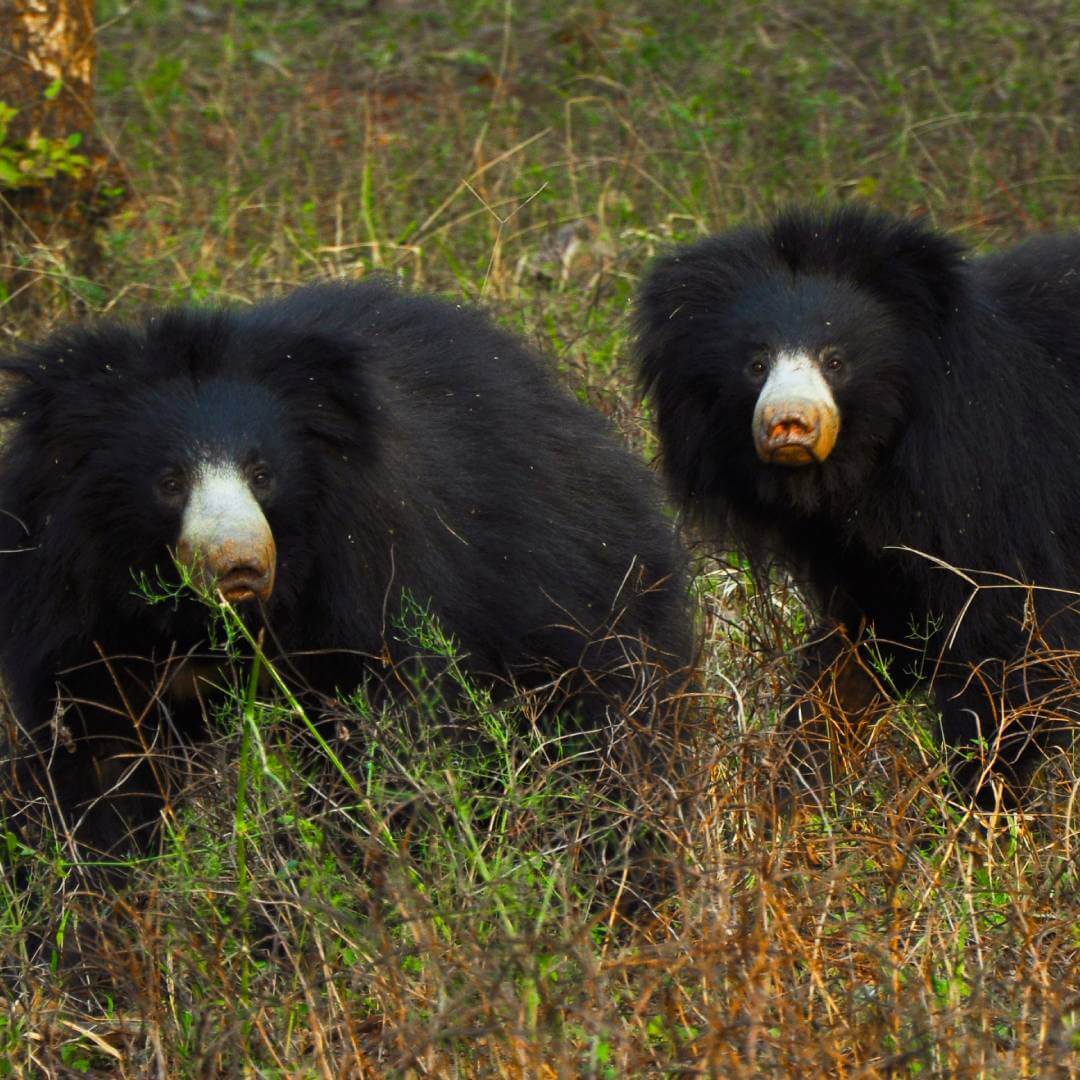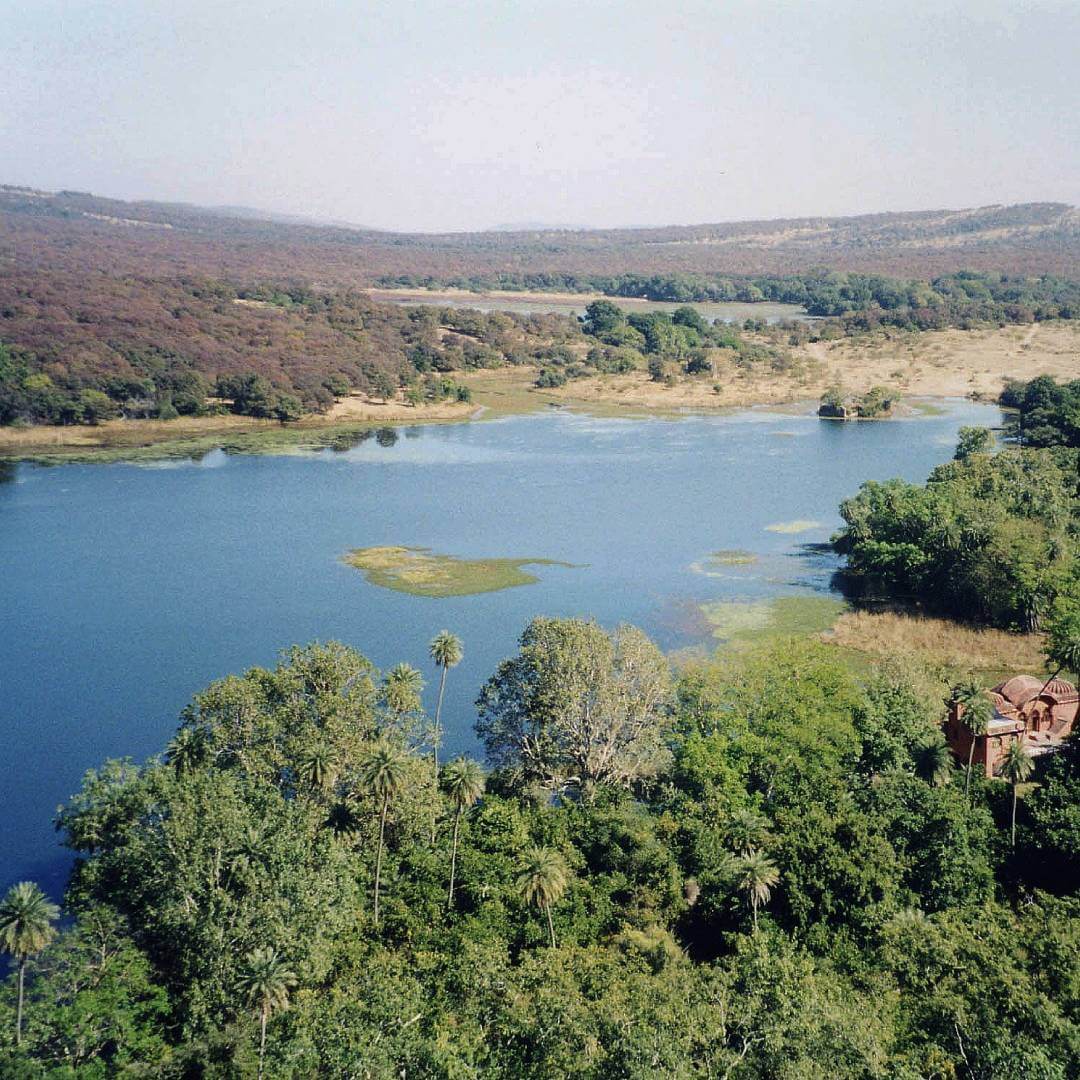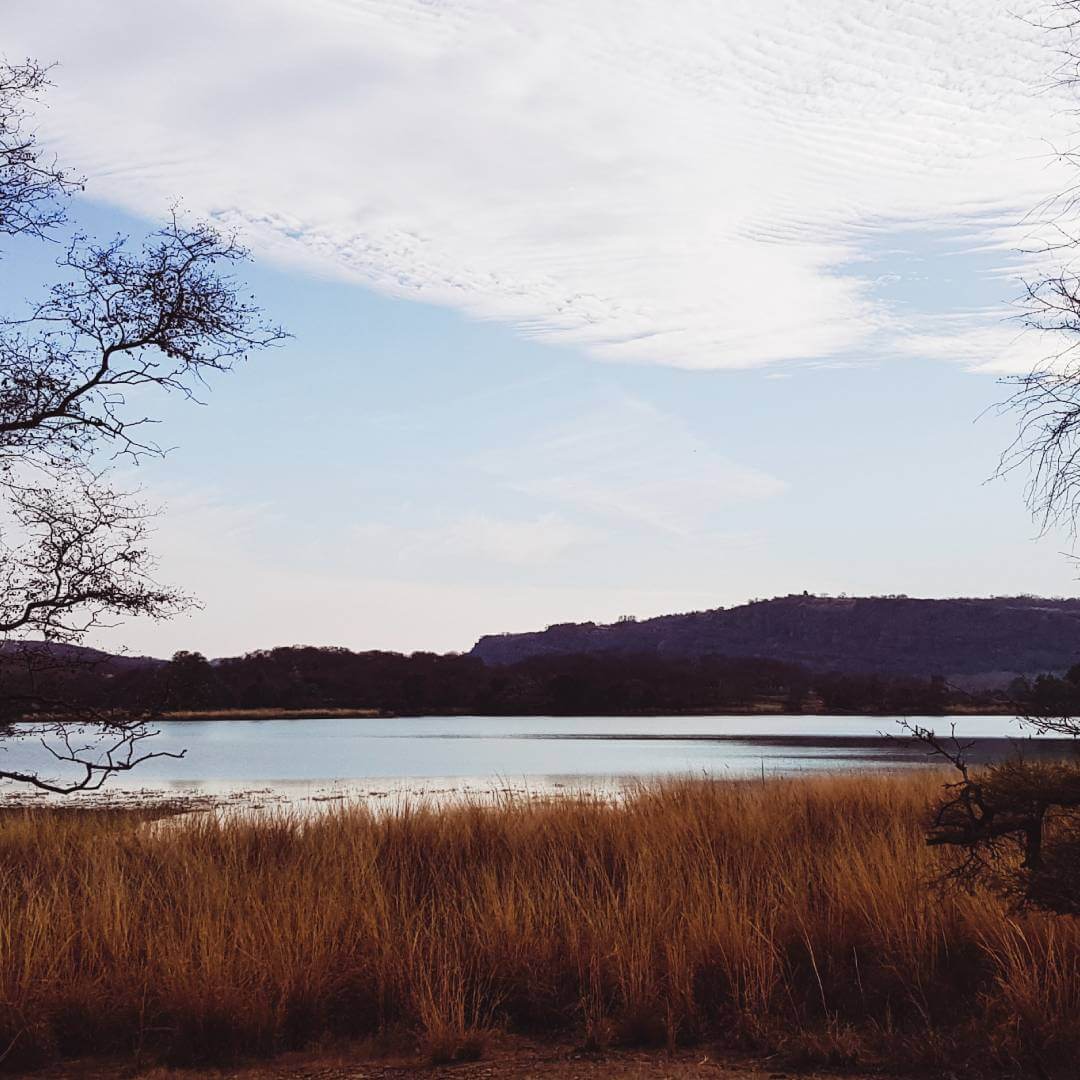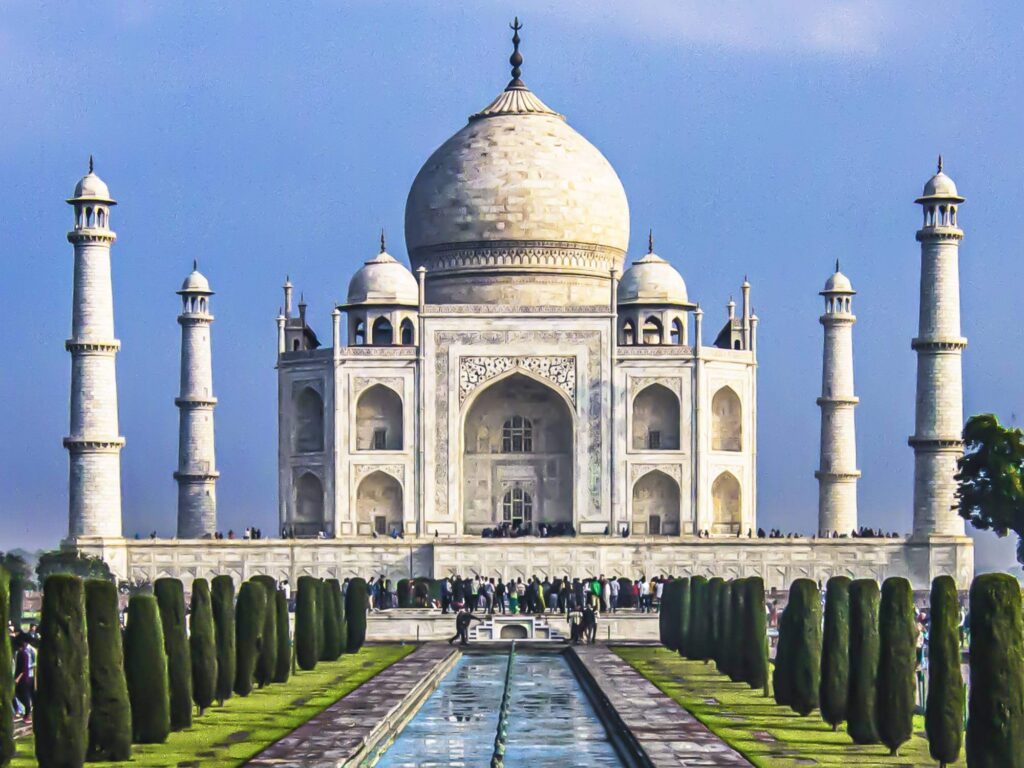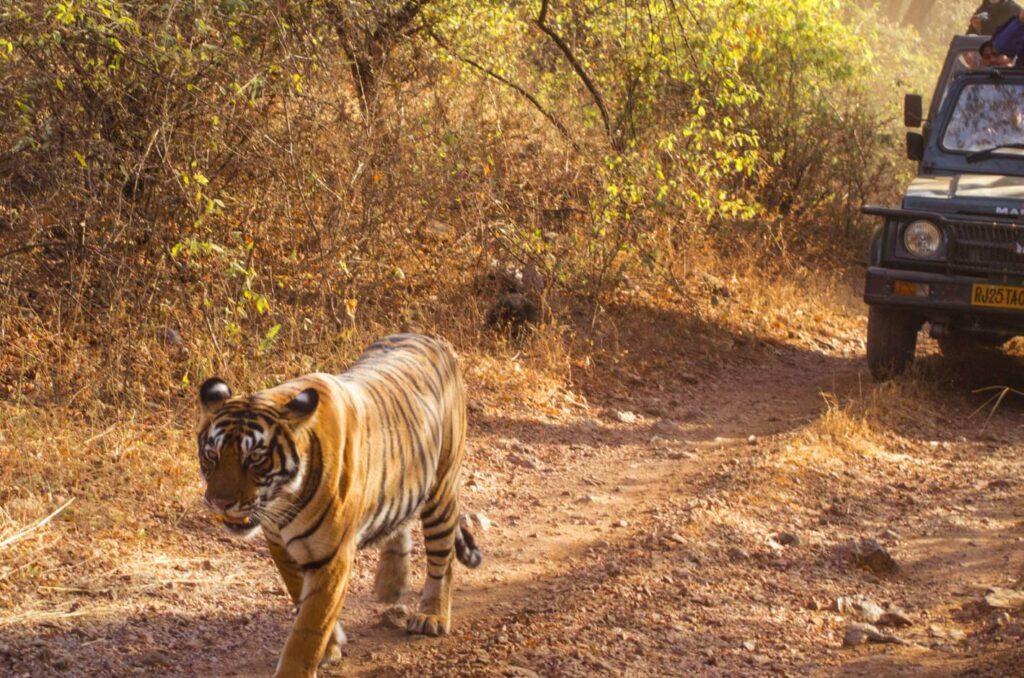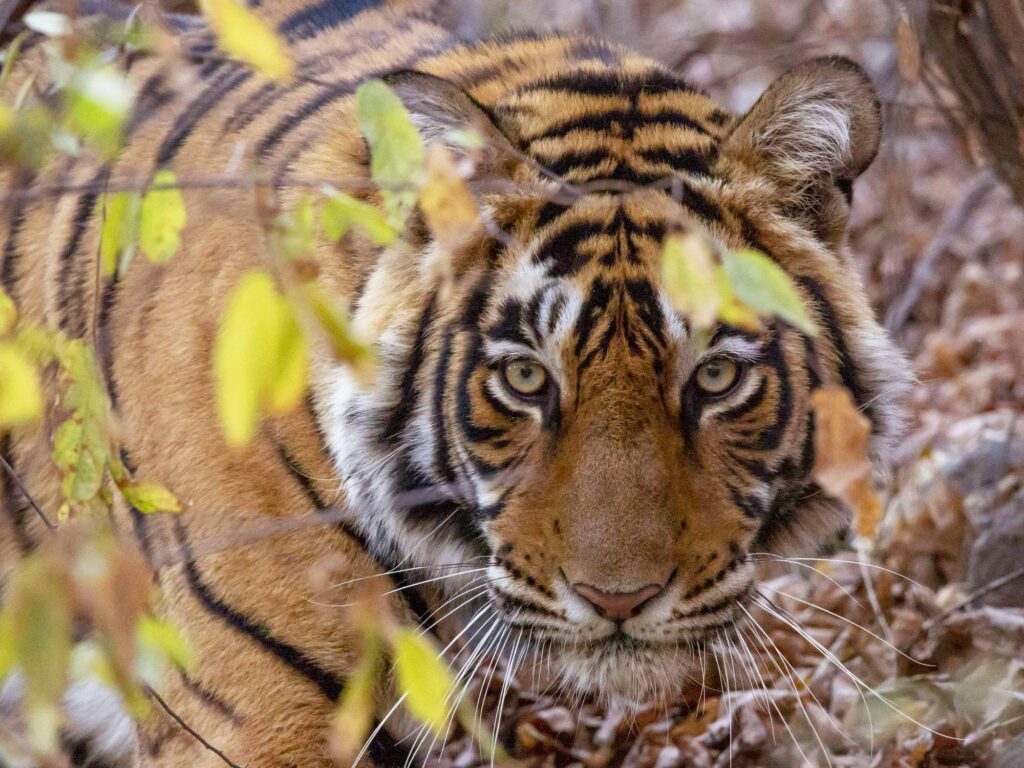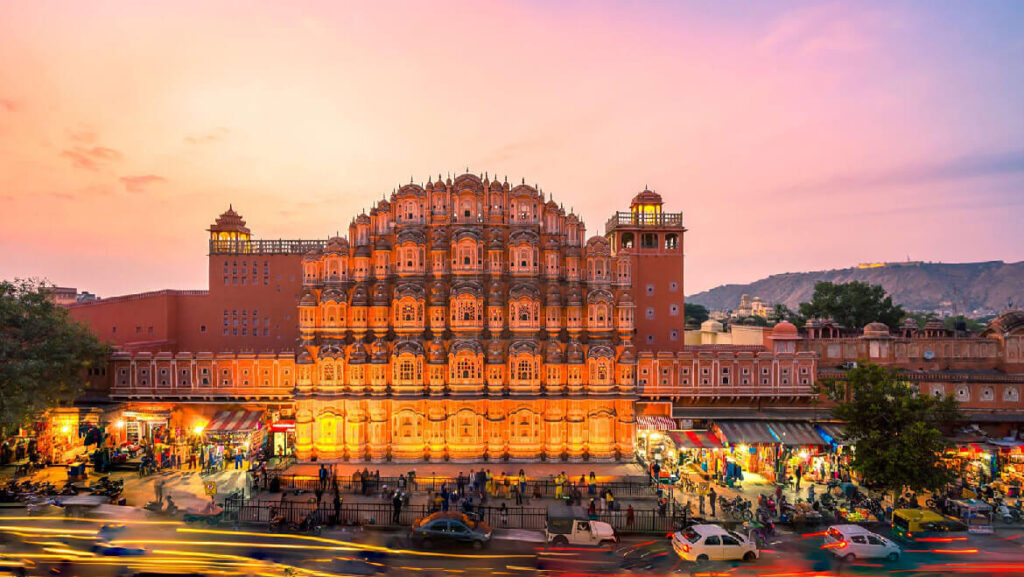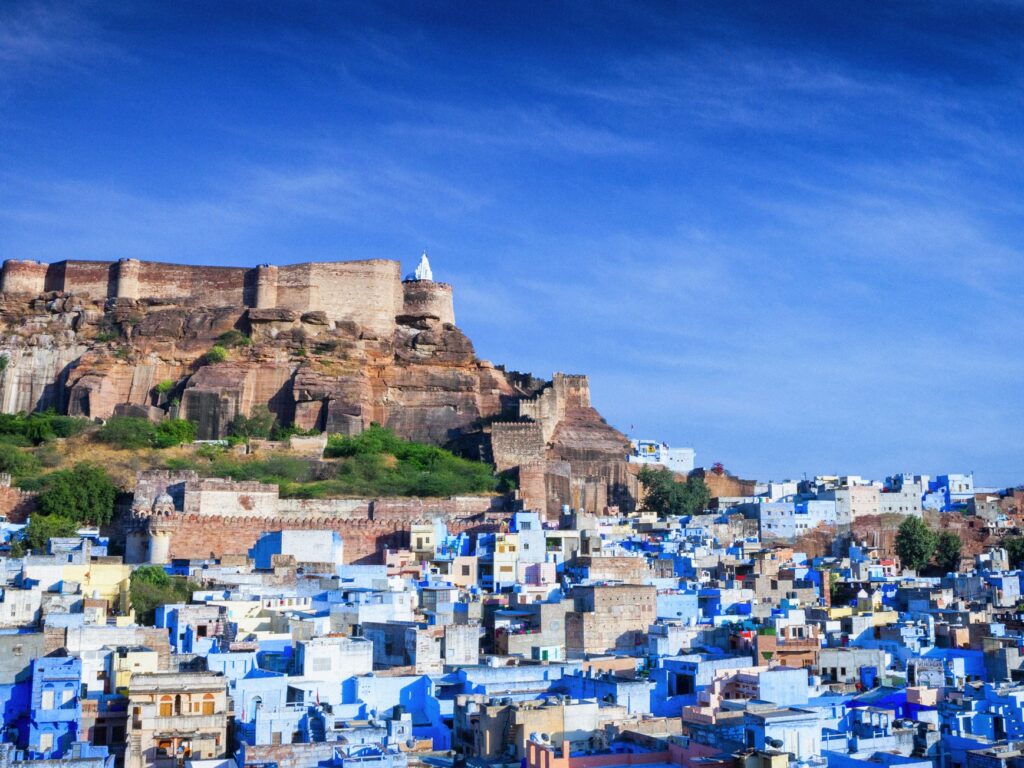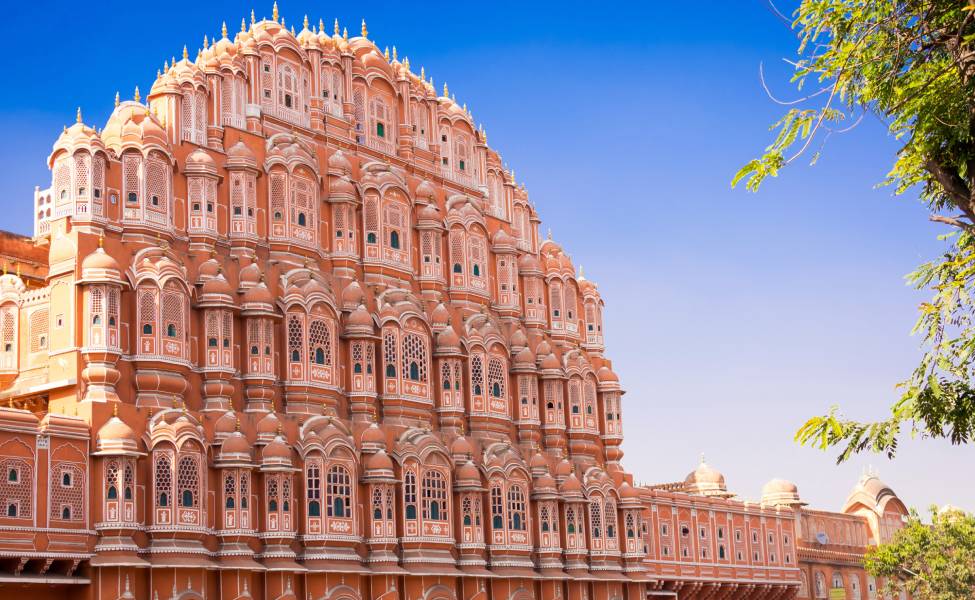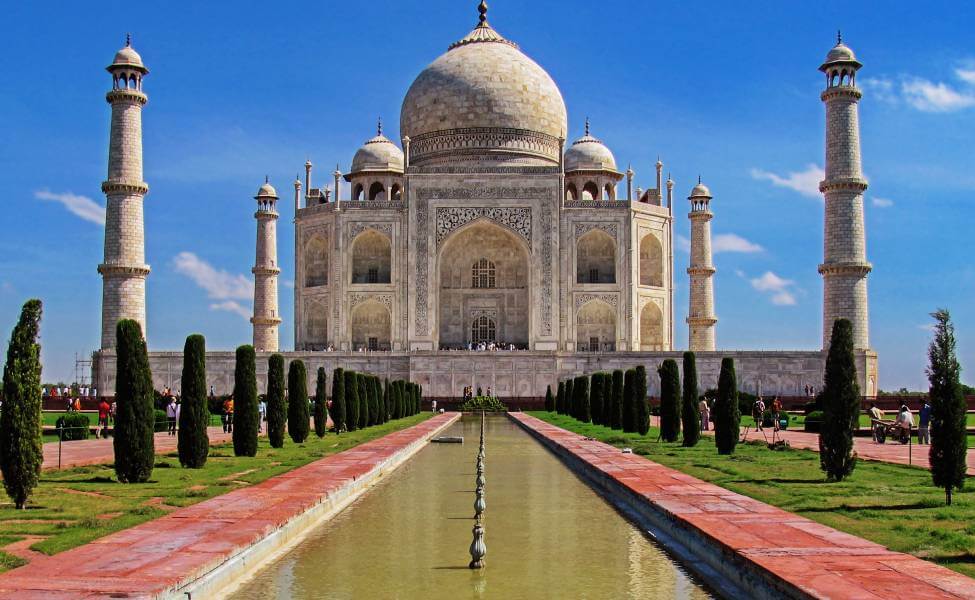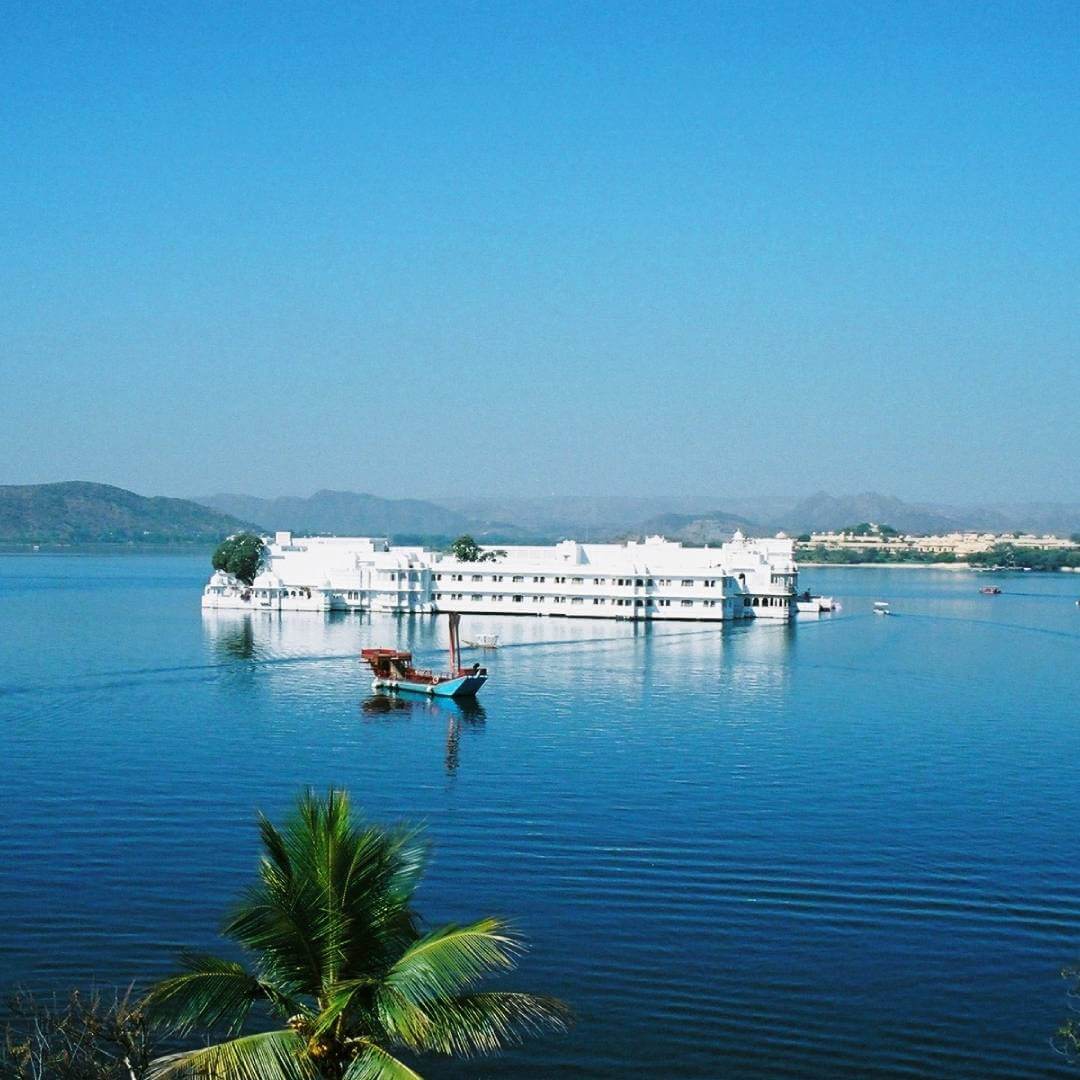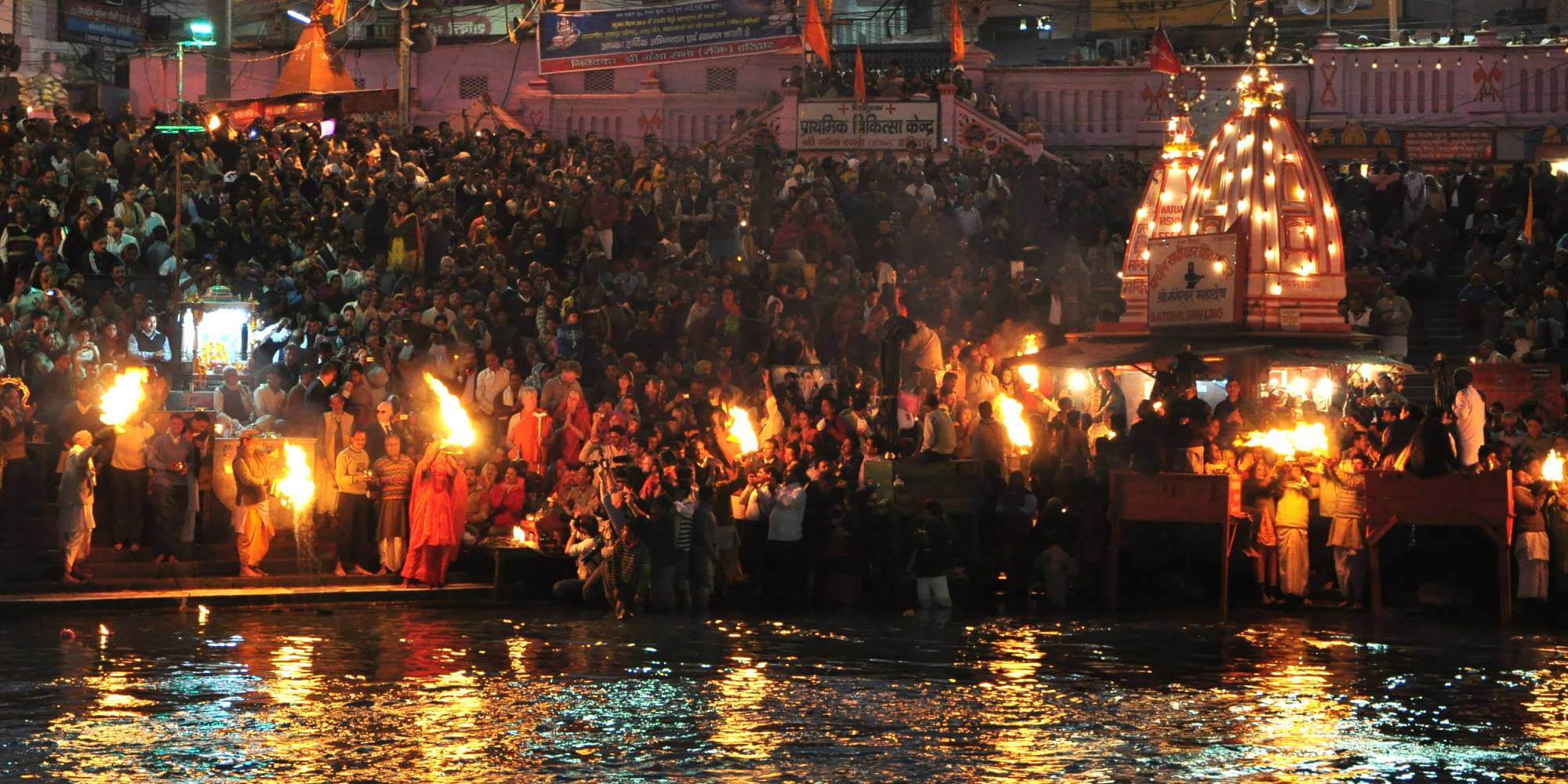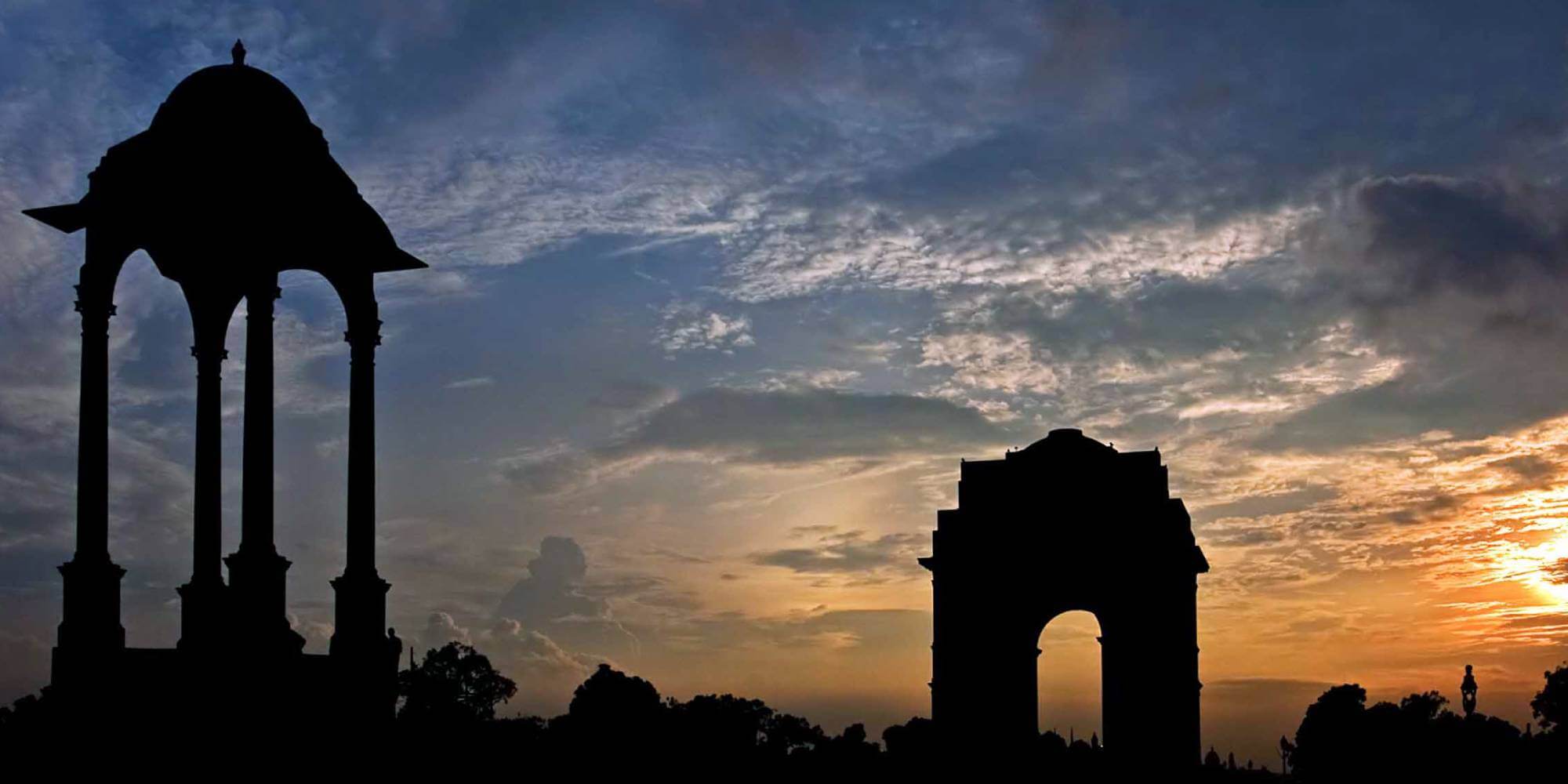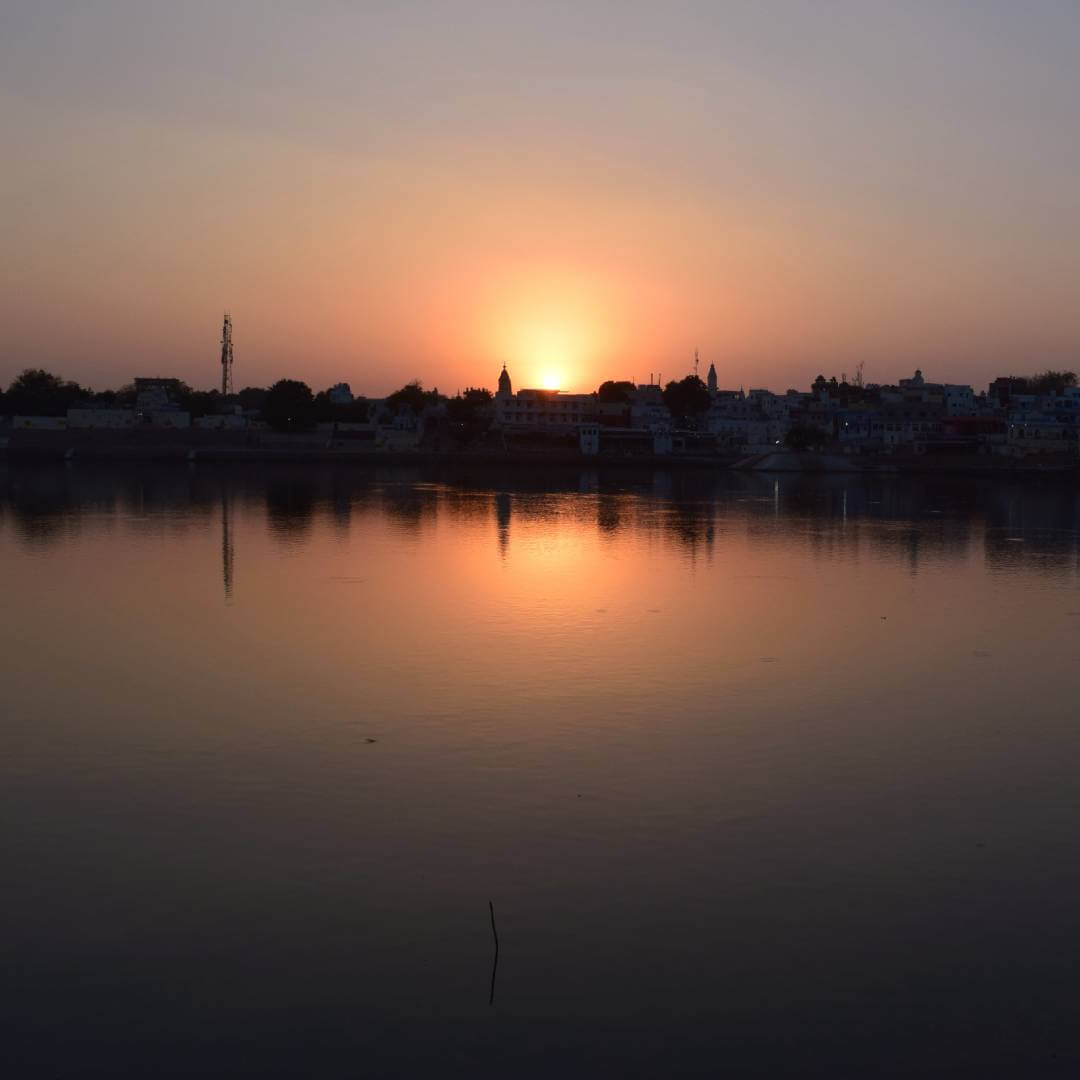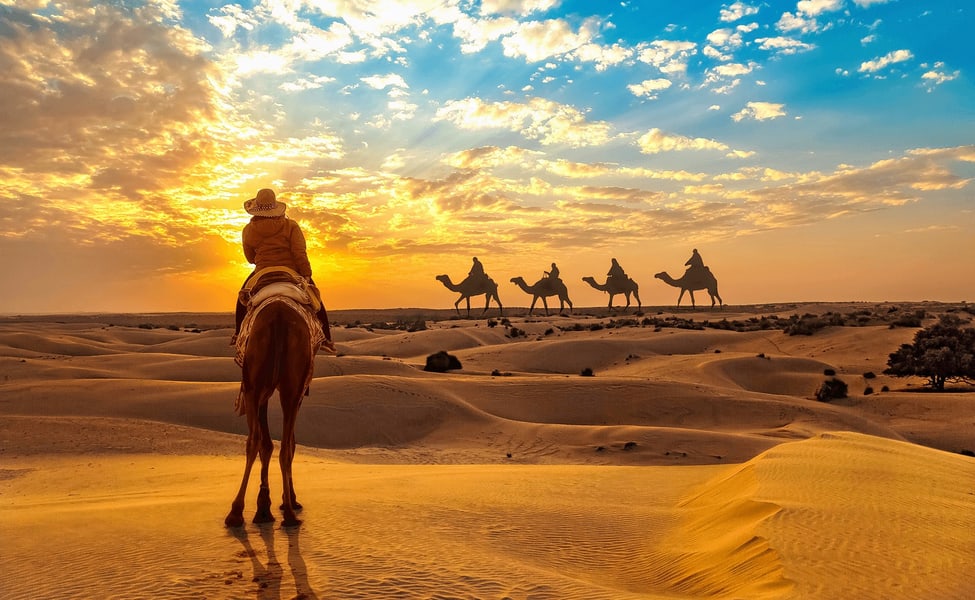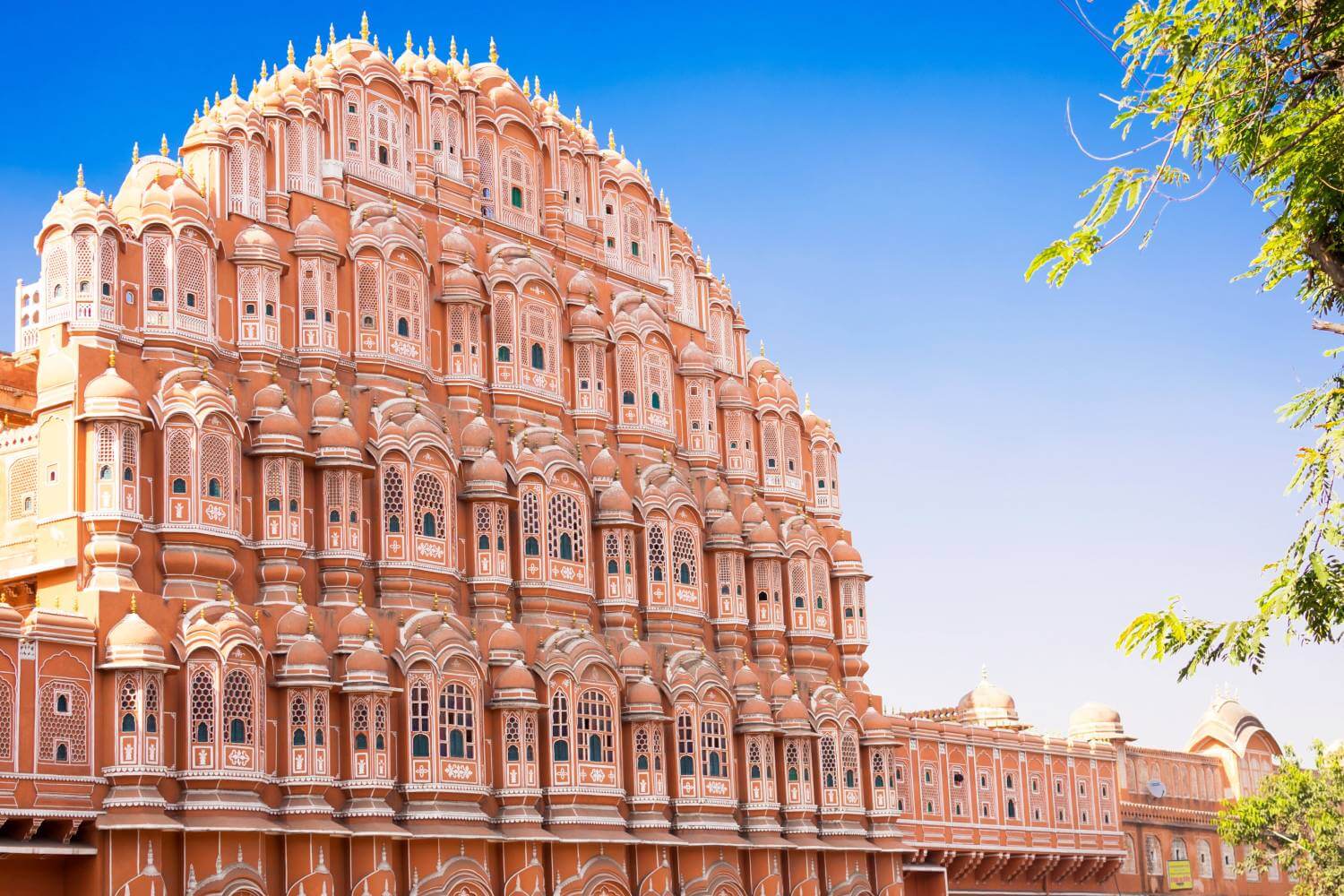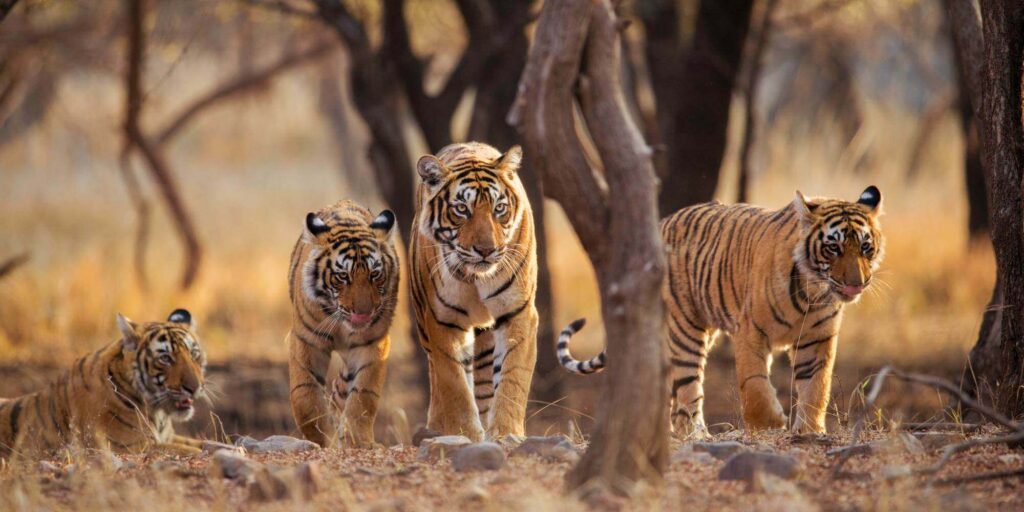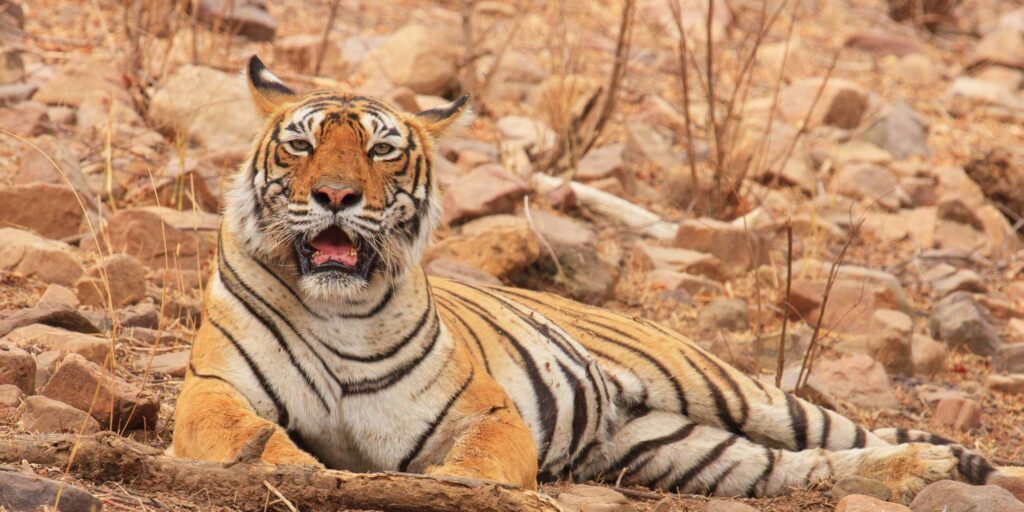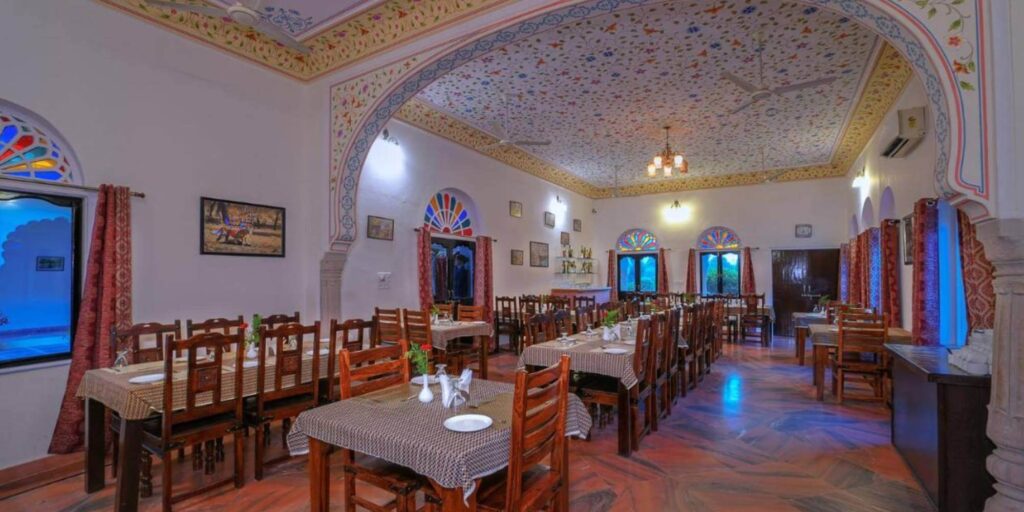


Welcome to Ranthambore National Park
Witness the Untamed Beauty of Ranthambore's Flora and Fauna
Ranthambore National Park Forest is an enchanting fusion of wilderness and nature, where majestic tigers roam amidst ancient ruins, weaving a spellbinding narrative of nature’s grandeur and regal heritage.
- Home to Diverse Fora and Fauna
- Preserving Wilderness
- Where Tigers Rule and Nature Thrives
- Famous Jungle Safari Destination

Top Things to Do in Ranthambore
Ranthambore Tourism Info Guides
Ranthambore Tiger Reserve, situated in Rajasthan, India, is a biodiversity hotspot and a haven for the elusive Bengal tiger. Spanning over 1,300 square kilometers, it encompasses diverse landscapes, from dense forests to historic ruins. The reserve’s thriving ecosystem supports a rich variety of flora and fauna, making it a prime wildlife destination.

Get to know how to reach Ranthambore by train, air, and roadways.

Explore information about the popular safari zones in Ranthambore Tiger Reserve.

Know the safari timings in Ranthambore National Park.

Explore popular wildlife safari tour packages for Ranthambore National Park.
Ranthambore Tiger Reserve Forest
Flora & Fauna in Ranthambore National Park Forest
Ranthambore boasts a rich tapestry of flora, ranging from dry deciduous forests to tropical trees. The park’s diverse vegetation, including dhok, mango, and banyan trees, creates a thriving habitat for numerous species, contributing to the enchanting biodiversity of this wildlife haven.
Ranthambore’s diverse fauna captivates with the majestic Bengal tiger reigning supreme. Leopards, sloth bears, and a variety of deer roam freely. Avian wonders include eagles and owls, creating an exquisite balance in this wildlife sanctuary’s enchanting ecosystem.
Popular Tourist Attractions in Ranthambore
Ranthambore Popular Tour Packages
From ₹150999
- 12 Nights 13 Days
- 4
Package Inclusions
- Accommodation
- Transportation
- Meals
- Activities/Sightseeing
From ₹20000
- 2 Nights 3 Days
- 5
Package Inclusions
- Accommodation
- Transportation
- Meals
- Activities/Sightseeing
From ₹11999
- 2 Nights 3 Days
- 5
Package Inclusions
- Accommodation
- Transportation
- Meals
- Activities/Sightseeing
From ₹17999
- 8 Nights 9 Days
- 5
Package Inclusions
- Accommodation
- Transportation
- Meals
- Activities/Sightseeing
From ₹17999
- 5 Nights 6 Days
- 5
Package Inclusions
- Accommodation
- Transportation
- Meals
- Activities/Sightseeing
From ₹17999
- 5 Nights 6 Days
- 5
Package Inclusions
- Accommodation
- Transportation
- Meals
- Activities/Sightseeing
From ₹15999
- 7 Nights 8 Days
- 5
Package Inclusions
- Accommodation
- Transportation
- Meals
- Activities/Sightseeing
Ranthambore National Video Tour
Latest Ranthambore Tourism Blogs
Top 5 Weekend Destinations from Delhi
These top 5 destinations promise a unique blend of wildlife, nature, culture, adventure, and tranquility,…
Popular Legendary Tigers of Ranthambore National Park
Read a comprehensive guide to learn more about the popular legendary tigers of Ranthambore National…
Top 10 Budget Luxury Resorts and Hotels in Ranthambore
Plan a thrilling wildlife vacation at the top 10 most popular budget-friendly hotels and resorts…
Ranthambore Visitor's Experience
Discover the wild beauty of Ranthambore through the eyes of our visitors on Jungle Safari.
Read reviews of Ranthambore National Park, Ranthambore Jungle Safari, and wildlife hotels in Ranthambore by our visitors.



More Info on Ranthambore National Park
Ranthambore National Park – It’s the only place where you can Rejoice like a child in the wilderness of the wild and put your senses in order.
Welcome to the mind-boggling world of tigers – Ranthambore National Park, an enchanting wilderness that was once a private game reserve of the royal family of Jaipur. Once, the mighty Tigress Machali’s voice resonated throughout the enchanting wilderness of Ranthambore—a wonderful treasure of exotic wildlife and floral species. It’s a place where the silence of nature has kept many secrets hidden in its folds.
A worldwide favorite wildlife spot for tourists, Asia’s one of the best wildlife wonders, Ranthambore National Park’s charm has captivated the senses of tourists for ages. Everything about Ranthambore will make you feel closer to yourself.
Take a Quick Glimpse of Important Information About Ranthambore National Park
Location | Rajasthan |
Area | 1,334 km2 |
Popular Wildlife Attractions in the Park | Bengal Tigers, Leopards, Sloth Bears, Various Deer Species |
Heritage Attractions in the Park | Ranthambore Fort and ancient ruins |
Ranthambore National Park Opening Date | 1st October Every Year |
Ranthambore National Park Closing Date | 30th June Every Year |
Best Time to Visit Ranthambore | October to June |
Nearest Airport | Jaipur International Airport |
Nearest Railway Station | Sawai Madhopur Railway Station |
Popular Tourist Spots Inside the Park | Malik Talao, Padam Talao, Ranthambore Fort, Ganesh Temple, Rajbagh Ruins..etc |
Total Safari Zones | 10 Safari Zones |
Ranthambore Tiger Reserve at Glance
Land of Enchanting Wildlife- Here you will see a wonderful treasure of beautiful species of flora and fauna. The dense forested areas of Ranthambore are home to a variety of wild animals such as Leopards, sloth bear, rhesus macaque, langur, Indian Wolf, Sambhar deer, Chital etc. Tigers are the main highlight of this amazing Wildlife Sanctuary. Wildlife and nature lovers come from all across the globe to enjoy Tiger Safaris and capture nature’s beautiful vistas in their lens. Do you know Ranthambore National Park was a home to the world’s most photographed tigress Machali T-16? This enchanting wilderness was her paradise. Also known as the Lady of the Lake Tigress, Machali used to live in the stunning habitat of Ranthambore. Wildlife enthusiasts from all across the globe come here to see her.
Embrace the Natural Beauty- You will be mesmerized to see the landscape of Ranthambore National Park. It has diverse topography. Dotted with the most stunning mountain ranges of the Aravalli and Vindhya. The entire area is a carpet of magical greenery. Lush green rolling hills, beautiful meadows, serene lakes, rivulets and crags offer the finest views of nature.
Birdwatchers Paradise – Apart from amazing flora and fauna, you will find a variety of bird species like Sarus Crane, Cormorant, waterfowl and serpent eagle etc. Full of thrill and adventure on every corner- Ranthambore National Park is indeed a perfect place to explore for a delightful wildlife exploration in India.
Breathtaking Heritage Attractions – There are so many heritage attractions to explore in Ranthambore National Park that you will not be able to resist yourself clicking beautiful pictures to show off on social media platforms. Rajasthan is rich in history and culture. No matter wherever you go you will always find the places of Rajasthan which showcase its rich heritage and culture. Ranthambore is no exception. Some of the popular heritage attractions in and around Ranthambore National Park are Ranthambore Fort, Tonk, sunehari Kothi, Jogi Mahal, Padam Talao, Trinetra Ganesh Temple, Hathi Bhata and Shilpgram etc.
The Quick History of Ranthambore National Park
The enchanting Ranthambore National Park is one of the most popular wildlife destinations in India. But do you know how it got its name? The stunning Ranthambore National Park got its name from an ancient fort of Ranthambore which is located in the middle of the jungle of Ranthambore. You will see the enchanting fort in ruins, but it still stands with all its glory and magnificence. The forests of Ranthambore were not a national park in the beginning. It was the private hunting reserve for the royals of Jaipur. The land of Ranthambore was also rich in floral and faunal species.
The local residents of the forests used the resources by paying a yearly tax to the kingdom’s treasury department. There was no exploitation of the resources due to low population density. But in the mid twentieth century the situation was completely changed. The resources were exploited, the population of tigers decreased due to hunting. The was a Need for the forest conversion policies. In 1953 Rajasthan Forest act came for the legal protection of the forests of Rajasthan.
The year 1955 was very remarkable for the history of Ranthambore National Park. In 1955 the entire forest cover of Ranthambore was declared as Sawai Madhopur Sanctuary. All the commercial activities were also banned to protect the natural resources of the forest.
But the population of tigers was diminishing day by day and it was the cause of concern. So, in 1973 ‘The Project Tiger’ was launched by the government of India to protect the tiger population and their conservation. Around 60 sq. miles of Ranthambore were taken under the project tiger scheme and it was declared as Tiger reserve area. Many villages which were situated in Ranthambore forests were relocated and the area of around 392sq km was declared as Ranthambore National Park on November 1st, 1980.
Safari Types in Ranthambore National Park
A thrilling Wildlife Safari is the captivating highlight of the tourism of the stunning Ranthambore National Park. It’s the only way to explore the deep dense forested areas of the jungles of Ranthambore and locate wild animals from close proximity. There are two types of Wildlife Safari available in Ranthambore National Park which lets you explore the exotic wildlife and nature in a delightful way.
- Jeep Safari in Ranthambore: Exploring the wild in a 6-seater open jeep is a one of a kind experiences. An open jeep is a 6-seater vehicle which enables you to explore the rich wildlife and exotic floral species of the jungle at eye- level. You will be able to locate wild animals even from narrow bushes as it can traverse through the narrow paths and winding trails. Tiger sightings become much more exciting in Jeep safari. Jeep safari is a very good option for those who are wildlife photographers and nature lovers. It enables you to capture pictures of wild animals from close proximity. Generally, it is booked on a sharing basis and can carry 6 people, but you can also book the entire jeep for yourself if you need a personalized kind of Experience. Sharing would reduce the cost of the safari but booking an entire jeep will be much costlier. It’s about choice and a kind of experience one needs to enjoy. Jeep safari offers the best views of wildlife and nature at eye level.
- Canter Safari in Ranthambore: Canter is a 20-seater open bus or van. It is also one of the best ways to explore the wonderful wilderness of Ranthambore National Park. It can carry 20 people at a time. Canter Safari is a very good option for those who want to have a sense of togetherness in their travel experience. Moreover, one of the main benefits of booking a canter Safari is its cost. If you want to explore the wildlife of Ranthambore on a low budget, Canter Safari is best. It is cheaper than a Jeep Safari. Because of its height you will also be able to locate animals from further into the forest easily. For families and groups, it is the best option to enjoy a delightful wildlife holiday. It takes the same routes taken by jeep, but it’s not allowed in zones 7 and 8. However, tiger sighting opportunities in canter are equally spectacular like Jeep Safaris.
Best Time for Jungle Safari in Ranthambore
To enjoy a fun-filled and thrilling wildlife experience in Ranthambore National Park, it is essential to consider the best season to visit. This choice depends on the traveler’s preferences. The Ranthambore National Park and Tiger Reserve remain open for jungle safaris from October to June, marking the official tourism season for exploring the forest and considered the best time to visit the tiger reserve.
Monsoon Season (July to September): Ranthambore Park Temporarily Closed for Conservation
Monsoon is a very crucial time for the wildlife of Ranthambore National Park. It is a time for the mating of wild animals. Hence, human intervention is prohibited to promote a safe and healthy environment for the growth of wild creatures. The park remains closed during this time of the year. However, you can enjoy the wildlife of the buffer zones 6 to 10 of Ranthambore National Park. They remain open throughout the year.
Best Time for Tiger Photography in Ranthambore
If wildlife photography and wildlife exploration is your main focus then without any doubt consider the months of April, May and June. These are the best months for wildlife sightings especially Tigers.
During this time the temperature goes up to 40-degree Celsius and wild animals come near water bodies to drink water. Tigers can be easily spotted near water bodies in these months of the year. It’s a very good option for wildlife lovers but you should only consider these months if you are able to bear harsh climate and interested in tiger sightings.
February to March – It’s for those who want to do the sightseeing along with wildlife exploration. There are many heritage destinations in and around Ranthambore National Park. The weather will remain cool for pleasant sightseeing. Apart from that you will also spot a variety of birds and wild creatures in the jungle.
The month of November to January is also very good for an amazing wildlife safari but you should only consider it if you love freezing temperatures. These are good months for sightseeing and wildlife exploration. October is not a favorable month when it comes to tiger spotting. After the monsoon rains, there is lots of water in the park, tigers do not easily come out. It’s a wonderful month for nature sightseeing.
Jungle Safari Timings in Ranthambore National Park
Months | Morning Safari Timings | Afternoon Safari Timings |
1st Oct to 31st Oct | 06.30 AM – 10.00 AM | 02.30 PM – 06.00 PM |
1st Nov to 31st Jan | 07.00 AM – 10.30 AM | 02.00 PM – 05.30 PM |
1st Feb to 31st March | 06.30 AM – 10.00 AM | 02.30 PM – 06.00 PM |
1st April to 15th May | 06.00 AM – 09.30 AM | 03.00 PM – 06.30 PM |
16th May to 30th June | 06.00 AM – 09.30 AM | 03.30 PM – 07.00 PM |
Popular Safari Zones in Ranthambore
What’s in the Zone? All the zones of Ranthambore National Park are best for capturing the captivating sight of wild animals. There are a total 10 zones in Ranthambore, out of the 10 the first five are the best zones for tiger sightings. Which means zones 6 to 10 are not good enough? No. Every zone of Ranthambore has something unique to explore which will definitely make your wildlife holidays fascinating and memorable. Let’s know about Ranthambore Safari Zones in detail-
Ranthambore Safari Zone 1
Zone 1 is one of the best and most visited wildlife safari zones of Ranthambore National Park. The entry and exit point of this zone is the same i.e. Singh Dwar. It’s the habitation zone of some of the most popular tigers such as t-39, Noor – Queen of Ranthambore, T-72 – Sultan etc. Scenic views of nature and the roar of the wild makes this zone one of the most sought-after zones in Ranthambore. Some of the most popular tiger sighting spots are Dhoop Chowk, Kaala Peela Pani, Sultanpur Chowki, Gada Doob, Kharia, Tuti Ka Nallah and Khali.
Ranthambore Safari Zone 2
Zone 2 is considered as the most visually attractive zone of Ranthambore. Entry and exit point of zone 2 is Jogi Mahal Gate. It is also one of the best tiger spotting zones. It houses scenic water tanks where you will be able to easily spot tigers and other wild animals if you visit here in summer. Some of the popular tigers spotted here are T-63 Chandra, T-72 Sultan, T-60 Indu etc. it is also very popular for leopard sightings. Consider Jogi Mahal, Nal Ghati, Phuta Kot, Lahpur Tiraha as the best tiger spotting areas in zone 2.
Ranthambore Safari Zone 3
Visual delight of Jogi Mahal, High Point, Padam Talab, Raj Bagh and Mandook cannot be forgotten. It is one of the most beautiful tiger spotting zones of Ranthambore. Also, the sight of Ranthambore Fort in the background adds more charm to this zone. It houses some of the most popular tigers T-19 Krishna and T-84 Arrowhead. It was also the sweet habitat of T-28 Sitara and T-85 Packman but now they are dead. The Rajbagh lake and Malik Lake are very popular tiger spotting sites here. Kdam Khandi, Doodh Bawri, Mandook, Tapman ka Nallah, Kalonji Ka Nallah etc are some of the most enchanting tourist as well as tiger spotting areas which you must not miss in zone 3.
Ranthambore Safari Zone 4
Zone 4 used to be the home of the most popular tigress T -16 but even after her death the beauty and grandeur of zone 4 never diminished. The entry and exit point of zone 4 is the same i.e Singh Dwar. It is one of the most popular and scenic wildlife safari zones of Ranthambore National Park. Some of the most popular tourist as well as tiger sighting areas are Tamba Khan, Adi daant, Lambi, Lakkad Da, Malik Talab and Singh Dwar. Sometimes you will be able to spot the tigers of the zone here as well as some parts of Malik talab can be seen in zone 4. It’s a great tiger spotting zone as it used to be the habitat zone of some of the most popular tigers such as T-25 Dollar, T-17 Sundari, T-28 Sitara etc. now they are dead, but it houses other tigers the sight of which will blow your heart away.
Ranthambore Safari Zone 5
The entry and exit gate of Zone 5 is Singh Dwar. Zone 5 of Ranthambore is very popular for tiger sightings. Some of the most famous tigers you can spot here are T-6 Romeo, T-19 Krishna and T-28 Star Male etc. It has the same route of zone 4 for Tamba Khan. There are some beautiful spots for photography and wildlife exploration in zone 5 which you must not miss. Visit Gular kui, Jokhang, Pilighat, Kachida Valley, Singh Dwar, Bakhola, Anatpura, Dhakda and Bagdah Tiraha etc.
With the increasing number of tourists and the growing popularity of wildlife tourism zones 1 to 5, the Forest Department of Ranthambore National Park has added 5 more zones (6 to 10) for wildlife enthusiasts. These zones are in the opposite direction of Zones 1 to 5.
Ranthambore Safari Zone 6
Zone 6 also known as Kundal is one of the most beautiful zones in Ranthambore. Its landscape is totally different from the first five zones. You will see lofty Aravalli ranges in the background of vast grasslands which are absolutely beautiful for photography. This zone is adjacent to zone 1 so you might see the tigers of zone 1 here. This year in the month of June T-39 tigress and T-8 Ladali, T-34 Kumbha Tiger in March Noor were spotted here. You will also spot hyena, spotted deer, sloth bear, blue bull, sambhar etc in this zone apart from tigers. Some of the best scenic spots for photography and tiger spotting are Soleshwar, Saran Ka Patthar, Palli Darwaza, Khali, Patwa ki Baori and Kala Pani etc.
Ranthambore Safari Zone 7
Zone 7 is also known as Chidikho. It is located in front of zone 6 and is one of the most delightful zones in terms of sightseeing in Ranthambore. It has less tourist spots as compared to the other 6 zones. The forest views and mountain terrains look so scenic that you will not be able to resist yourself clicking pictures. The entry point of this zone is Raj Bagh Naka. T-61 Junior ladali, T-8 Ladali, and T-34 Kumbha are often spotted in this zone.
Ranthambore Safari Zone 8
Zone 8 is also known as Balas. It’s one of the scenically rich areas of Ranthambore. stunning vistas of Aravalli hills, lush greenery teeming with exotic wildlife will make you feel like you are in a heaven. Sweet chirpings of the winged creatures like Indian courser, honey buzzard will make your day if you love birdwatching. You will be able to spot the tigers of zone 7 here quite often. Balas, Neemli Dang, Kali Bhat, Kherai, Mahakho are some of the best spots to explore in this zone.
Ranthambore Safari Zone 9
Zone 9 is also known as Kuwal Ji. You must visit this zone once to explore the beautiful sights nature has to offer and delightful wildlife. It is located in the Phalodi range of Ranthambore on the banks of Chekal River. It is also a very popular spot to see tigers. You might see T-59 Alcmene which a very popular and young tigress is found in this area. T-62 Ladala and T-42 Fateh are also the most dominant tigers found in this zone. It is a place where you will spot Lots of aquatic birds, sloth bears and caracals.
Ranthambore Safari Zone 10
Zone 10 is also known as Aantri. It is also one of the best tiger sighting paradises for wildlife lovers in Ranthambore. You might spot T-59 Alcemene who is very young and shy, T-58 Rocky Male, who is very young and bold and T-42 Fateh who is very aggressive and fierce. Hilly settings, deep forests, serene lakes adorn this wonderful zone. Apart from tigers this is a place where you will spot jackals, sloth bears, antelope, and leopards. Kushalipura, Honda, Mantri, Banskhori, Bodal and Devpura are some of the best tourist spots to explore in this zone.
Some Interesting Facts about Ranthambore National Park
- Royal Hunting Reserve – Ranthambore National Park was once the favorite private hunting reserve for the royals of Jaipur. British royals were also fond of this wilderness. In 1961 Queen Elizabeth II of England and Dyuk Prince Philip of Edinburgh visited Ranthambore for hunting.
- Lake Paradise – Ranthambore National Park is blessed with three beautiful lakes named Rajbagh, Padam Talao and Malik Talao. These lakes are the paradise of aquatic vegetation. You will also spot many wild creatures specially tigers and migratory birds of different kinds here.
- Oldest Banyan Tree – Ranthambore National Park houses the second largest Banyan Tree in India. It is located near Padam Talao.
- Lady of the Lake, Machali – The queen of Ranthambore national Park, the lady of the lake, the crocodile killer – Tigress Machali is the most popular tigress of Ranthambore. She dominated the largest area of the park for over a decade. She even helped the Indian government to earn US$100 million. And contributed a lot for the tourism of wildlife. In the 66th National Film Awards a film on Machali – The world’s most famous tiger won the national award.
Top Tourist Attractions in Ranthambore National Park
- Trinetra Ganesh Temple – With all its glory and magnificence, Trinetra Ganesh Temple stands to bless the devotees with luck and prosperity. It is a holy abode of Lord Ganesha located in Ranthambore Fort, built by king Hammeer in 1300AD.
- Bakula- The ambiance of Bakula will captivate you soul with its lush greenery, emerald dense forests and exotic wild animals. Spot mongoose, tigers, a variety of birds, lions and monkeys in the enchanting forest area of Bakula in Ranthambore.
- Kachida Valley- Known for the alluring sunrise views, captivating sight of wild panthers, and sloth bears and stunning green landscapes, Kachida Valley in the outskirts of Ranthambore National Park is one of the best places to behold for wildlife and nature sightseeing.
- Lakarda and Anantpura – The wildlife paradise of the north-western region of Ranthambore, Lakarda, and Anantpura will spellbound you with the beauty of dense forests. Here, you will find pugmarks of Indian striped hyenas and abundant sightings of monkeys, porcupines, and sloth bears.
- Rajbagh Ruins- Forever enchanting and captivating, Rajbagh Ruins will delight your soul with its views. Scenic Rajbagh lake in the backdrop adds more charm to the ruins. Ruins of the Broken rooms, outhouses with arches and the sight of plenty of wild animals such as chital, nilgai, blackbuck etc will make your day here.
- Padam Talao – According to the locals it used to be the bathing place of Princess Padmavati. It is one of the most scenic lakes to explore in Ranthambore. You will spot Chinkaras, deers and crocodiles in abundance. An old Banyan tree located nearby is a captivating highlight of this spot. It is said that the Banyan tree is more than 600 years old.
- Ranthambore Fort – Landmark destination of Ranthambore, its ambiance is one of a kind. It is one of the most popular tourist attractions to visit in Rajasthan. Witnessed many wars and conquests, this fort is a great architectural marvel built by Chauhan rulers in 944AD. It is also a UNESCO World Heritage Site.
- Malik Talao- Serene and soothing, Malik Talao is one of the most fascinating lakes inside Ranthambore National Park. You will spot crocodiles, peacocks, kingfishers, egrets in its banks. It’s a wonderful spot for photography as well.
- Rajiv Gandhi Regional Museum of Natural History – Located in the village of Ramsinghpura, Rajiv Gandhi Regional Museum of Natural History showcases the rich history and culture of Rajasthan. It has a n amazing resource center for the public in general and children. You will know a lot about natural heritage, plants, animals, biodiversity, forests, and wildlife of Rajasthan.
- Jogi Mahal- Jogi Mahal used to be the delightful recreation and entertainment spot for the royal families of Jaipur. It is now the oldest heritage marvel of Ranthambore. Padam Talao located nearby is a source of visual delight for the tourists. You will spot a lot of birds and wild animals quenching their thirst on the banks of the lake.
- Rajbagh Talao- Edges dotted with ancient ruins and emerald forests Rajbagh Talao’s stunning views will blow your heart away. Rajbagh ruins in the background makes this scenic spot more picturesque. It’s one of the best places to explore in Ranthambore National Park.
How to Reach Ranthambore National Park?
By Air: Jaipur International Airport in Sanganer is the nearest airport to reach Ranthambore National Park. From the airport, you can take a taxi or cab to reach Ranthambore National Park. The distance to Ranthambore National Park is only 155 km from Jaipur.
By Train: Sawai Madhopur Railway Station is the nearest railway station to reach Ranthambore National Park, only 11 km away. From the station, you can take a cab, bus, or taxi to easily reach here. This station is well-connected to other states of India. You can also reach here by luxury trains like Palace on Wheels, Maharaja Express, Royal Rajasthan on Wheels, etc.
By Road: Ranthambore National Park is well-connected with all major towns and cities of India. Although there are no direct buses to Ranthambore Park, you can find plenty of buses from Jaipur to reach here.
Top Places to Visit with Ranthambore National Park
If exploring more and enjoying more is your motto in life, then you would also love to know about some beautiful tourist places to explore along with Ranthambore. These places will increase the fun and excitement of vacationing in India. Extending your vacation in these places would become so good in terms of visual spectacle and adventures that it will be a memorable experience of a lifetime.
Discover Delhi – A Tapestry of Cultures, Colors, and Contrasts
Part of Golden Triangle Circuit which includes Delhi, Agra and Jaipur, it’s one of the best places to visit if you love city travel. Come here to experience a beautiful fusion of cultures, peoples and cuisines through its heritage structures, old bazaars, cuisines, malls etc. The city’s daily life will captivate your senses forever.
Agra – Timeless Splendor, Eternal Love at the Taj Mahal
Agra is a land of Mughal architectural marvels and how one can miss Taj Mahal which is one of the seven wonders of the world. Petha and Dal Moth are some of the best delicacies to enjoy here. Indeed, a place of amazing heritage attractions to add to your list. It is also one of the three corners of Golden Triangle circuit which includes Delhi, Agra, and Jaipur.
Jaipur’s Majesty: Heritage, Culture, and Unforgettable Charm
Dipped in history and culture, Jaipur is full of life. Bustling bazaars, architecture monuments, temples and delicious Rajasthani cuisines will enrich your travel experience to another level. It’s one of the three corners of the Golden Triangle which includes Delhi, Agra and Jaipur. Also known as Pink city, this UNESCO World heritage site’s beauty will blow your heart away.
Bharatpur – A Birdwatcher’s Paradise
The land of Jat rulers and Mughal kings, Bharatpur is filled with beautiful architectural heritage destinations. It also houses a UNESCO World Heritage site – Keoladeo National Park, formerly known as Bharatpur Bird Sanctuary, a paradise for birding. This place will elevate your wildlife holidays. It is also renowned for an Iron Fort known as Lohagarh Fort.
Bundi – A Journey Through Palaces and Panoramas
Bundi is a very peaceful retreat in Rajasthan. There are some extremely gorgeous tourist attractions in Bundi which you must not miss such as Bundi Palace, Bundi Lake, Bundi Stepwells, murals on the walls, Taragarh Palace, Badal Mahal, Moti Mahal and Chitra mahal etc. It’s full of beautiful vistas and stunning heritage attractions. It is a peaceful place as compared to the other places of Rajasthan.
Chittorgarh – Echoes of Valor in Every Stone and Sunset
Interested in listening to the stories of courage and valor of Rajputana then you must visit Chittorgarh. This place is filled with beautiful palaces, temples and towers. Every corner of this place has a story to tell which will take you to its glorious past of Rajput Rulers.
Haridwar – A Spiritual Odyssey Along the Sacred Ganges
Abode of spirituality, Haridwar is a place to be in if you love peace. It has so many temples to behold. One of the most mesmerizing experiences is to sit at the banks of river Ganga to listen to the evening Ganga aarti. The serene ambiance will take your breath away.
Rishikesh – Yoga, Spirituality, and Riverside Bliss
In terms of ambiance Rishikesh matches the vibe of Haridwar. It also has so many temples to behold and the evening Ganga aarti will seduce your senses. Is also an adventure and yoga capital of India? Rejuvenate your senses in the peaceful ashrams, math and yoga centers, the experience will please your mind. Adventure lovers can try amazing water sports such as River Rafting, camping, bungee jumping and cliff jumping etc.
Varanasi – Mystical Ghats and Spiritual Echoes
Its mystical vibes attract pilgrims from all across the world. Varanasi is full of serene Ghats, temples, mats, ashrams, ancient domes and colorful bazaars. It’s an awesome spiritual retreat for the spiritually inclined travelers. Itis said that if one dies in Varanasi then he or she will be free from the cycle of birth and death. Visit here for a serene spiritual pilgrimage.








